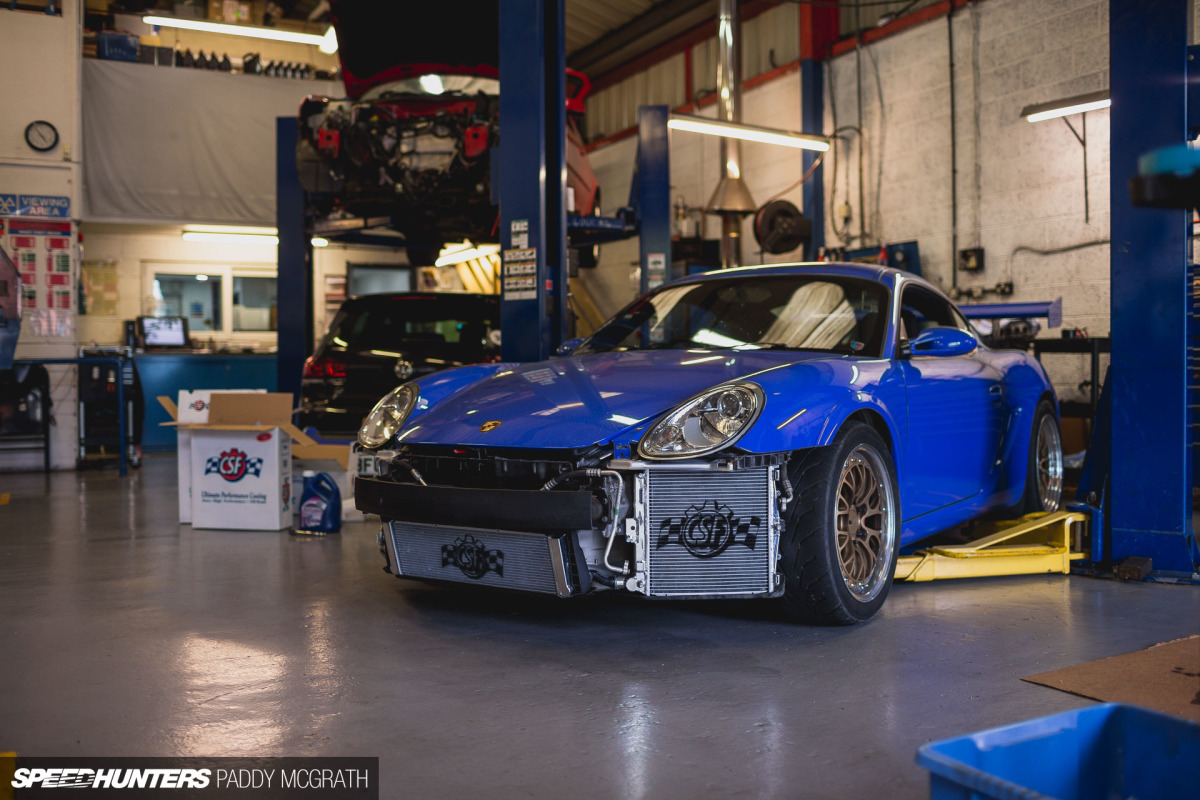
Hello, my name is Ryan and I’m a lifetime Speedhunters reader. Through various phases of my life it’s been a strange and friendly constant.
It was initially Japanese car culture that brought me to the site, but over the years, as my automotive palette has grown, Speedhunters has always been there to remind me that there are other utterly car obsessed people in the world. Turns out that it’s actually okay to spend hours poring over technical details while other people play sports or watch football.
I’m no longer the 18-year-old kid that first typed www.speedhunters.com into his web browser. Laptops have come and gone, AltaVista and Ask Jeeves are but a memory, and internet speed has certainly gotten faster. Ten years on, multiple project cars and an engineering degree later, Speedhunters still remains at the top of my favorites list.
I feel like I have known Paddy for a long time, perhaps because, despite his writing style, he’s such an upbeat and friendly guy that I felt familiar before we met. Searching back through the memory bank of bromances, I can recall the first time. It was the Edition38 show in 2010 and I’d just completed my Zombie Mk4 build: a six-pot Mk4 Golf that I had blown up, crashed, painted matt black and put a 550bhp turbo engine into – as you do. Smart people learn from their mistakes, but I seem to periodically repeat this madness, and I bloody love it.

This brings us neatly onto the Porsche Cayman you see in the lead image, or rather the reason I bought it. History definitely repeats itself around here, and the next time I met Paddy was with my Mk5 Golf. He shot it for Speedhunters back in 2013, but it’s now wildly out of hand. It’s currently in storage awaiting an overhaul, but 580bhp, a full roll-cage and ex-British Touring Car aero are the highlights.
Being an intense project (and also being in about 1000 pieces right now) it’s not really something I could to take to the occasional track day here and there. Six months off the road for the Golf soon turned into two years, and I found myself looking for a gentlemanly occasional track day toy so I could take a break from the intensity of building a full-on race car.
Evolving a 987
But try as I might, I couldn’t shake the idea of turning a Cayman 987 into my own interpretation of a GT4. There’s something about being the underdog that appeals to me, and Porsche models don’t get more sniffed at than the Cayman. Well, after the Boxster, maybe.
Keen to keep a solid roof over my head, I found a basic Cayman S at the right price and set about a 12-month transformation. From billet adjustable suspension arms, electronic damping, a trick differential and a full colour change, you could say it’s been a busy year or ownership. It’s been totally worth it however, as I’ve now got a fully-fledged track Porsche that can take on a European road trip and the most arduous race circuits along the way, plus harass the odd GT3 every now and then.
It’s when you think you’re finished however that you realize you’ve only just begun. Although Porsche engineering is highly regarded, the lower rung models have understandable abbreviations in spec to meet a lower price point.
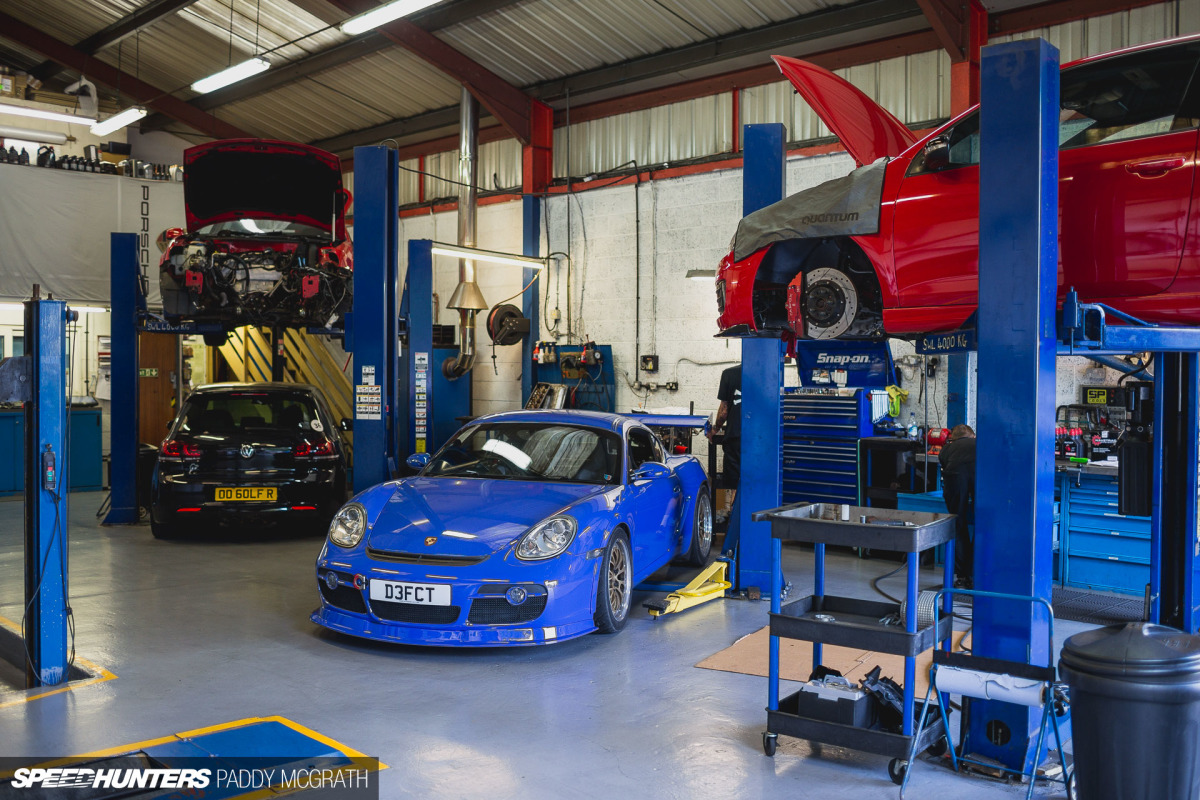
The 987 Cayman is no exception. For track use, considerable modification to oil control and cooling is required to keep the engine safe. Being a boxer engine and so long, it’s really tough to get lubrication to the extremities of the engine, which means the 987 is prone to bore scoring from overheating and also the odd rod bearing here and there. Not ideal for a track project.
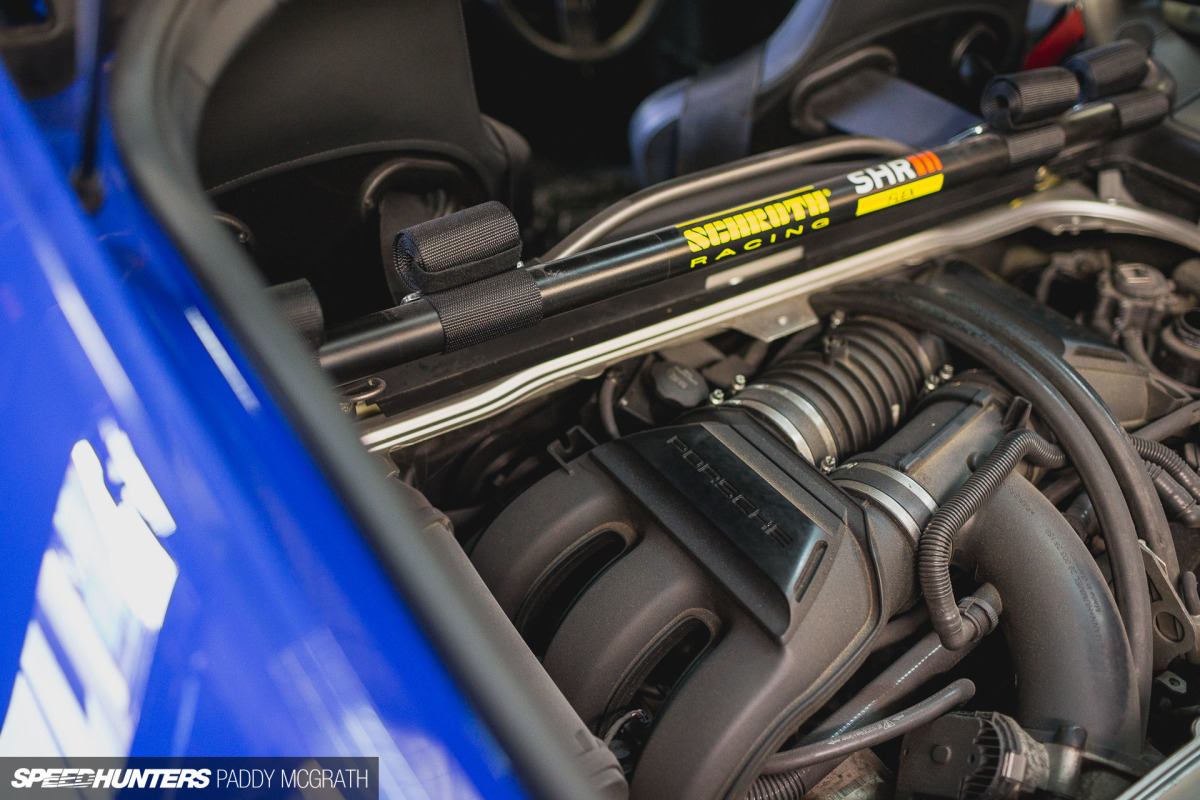
As it goes, internal combustion engines are not really that efficient from an energy conversion point of view. In a really efficient engine, on a good day, with the wind behind you, it’s fair to assume that around one third of the chemical energy in fuel is actually turned into kinetic energy to drive the crankshaft. The rest is wasted in other forms and does not help drive the car. One of the largest byproducts of combustion is thermal energy.
Approximately one third of the chemical energy from the fuel is converted to useless thermal energy. Some thermal energy is useful to drive the crankshaft in thermal expansion, but we are just talking about thermal energy that is not helpful to drive the car. We’ll call this heat.
If your car produces 200bhp, this means one third of the potential chemical energy of the fuel is used to make 200bhp, another third is used to make 200bhp of useless heat. It’s about 1:1 ratio as a rule of thumb. It’s this heat that your original cooling system is designed to keep control of. The liquid in your cooling system acts as a heat sink around the combustion chamber and draws this heat away from the components.
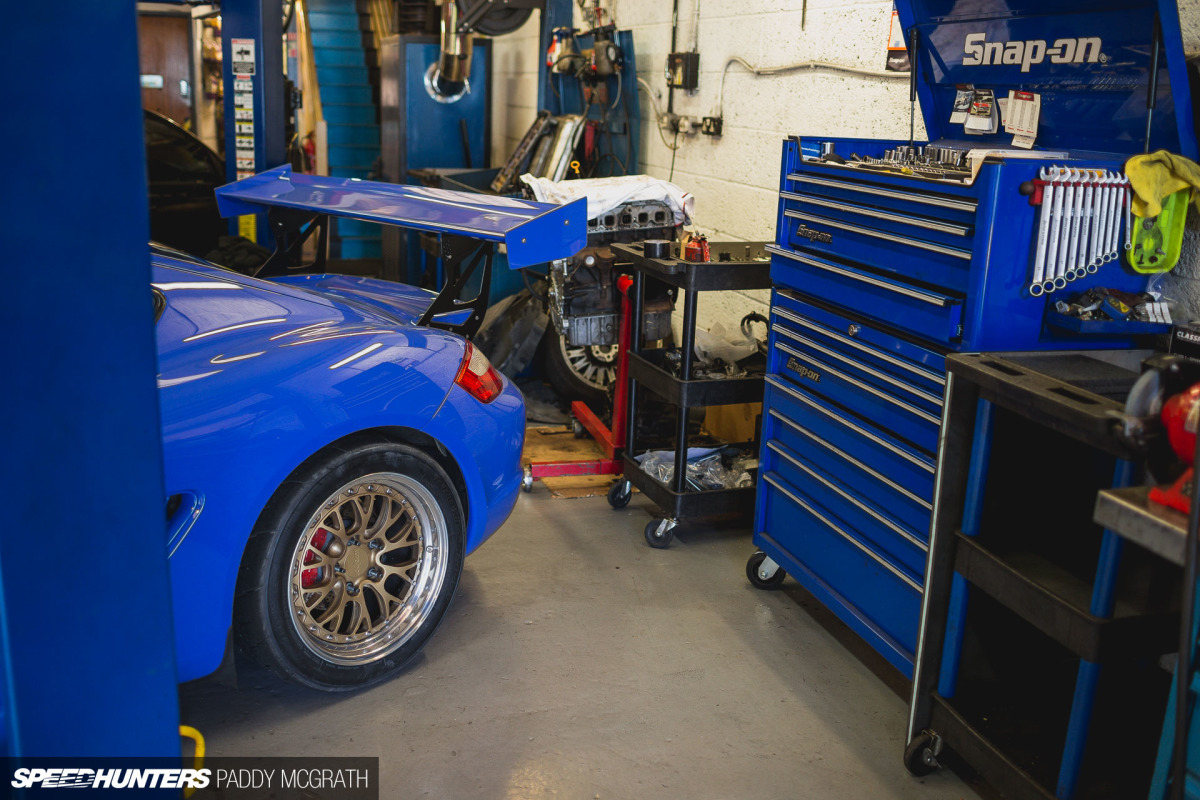
In a stable system your water pump pumps the hot fluid to cool in the radiator and then back into the block to begin the process again. But if your radiator can’t dissipate this heat and the cooling liquid enters the engine already hot, it can’t cool the cylinders down.
As water temperature rises, the cooling liquid and radiator become saturated with heat. Temperature in the system begins to spiral out of control as cylinder temperatures rise, the combustion becomes even less efficient with more heat byproduct and oil temperature increases. Components grow and generate even more heat, the temperature of cylinders and fluids continues to rise and you can really only see this going one way.
When you take your car on a circuit you’re taking it far outside of its original design parameters, and in reality I’ve been asking a little Cayman to do the job of a GT3 without any consideration for cooling.
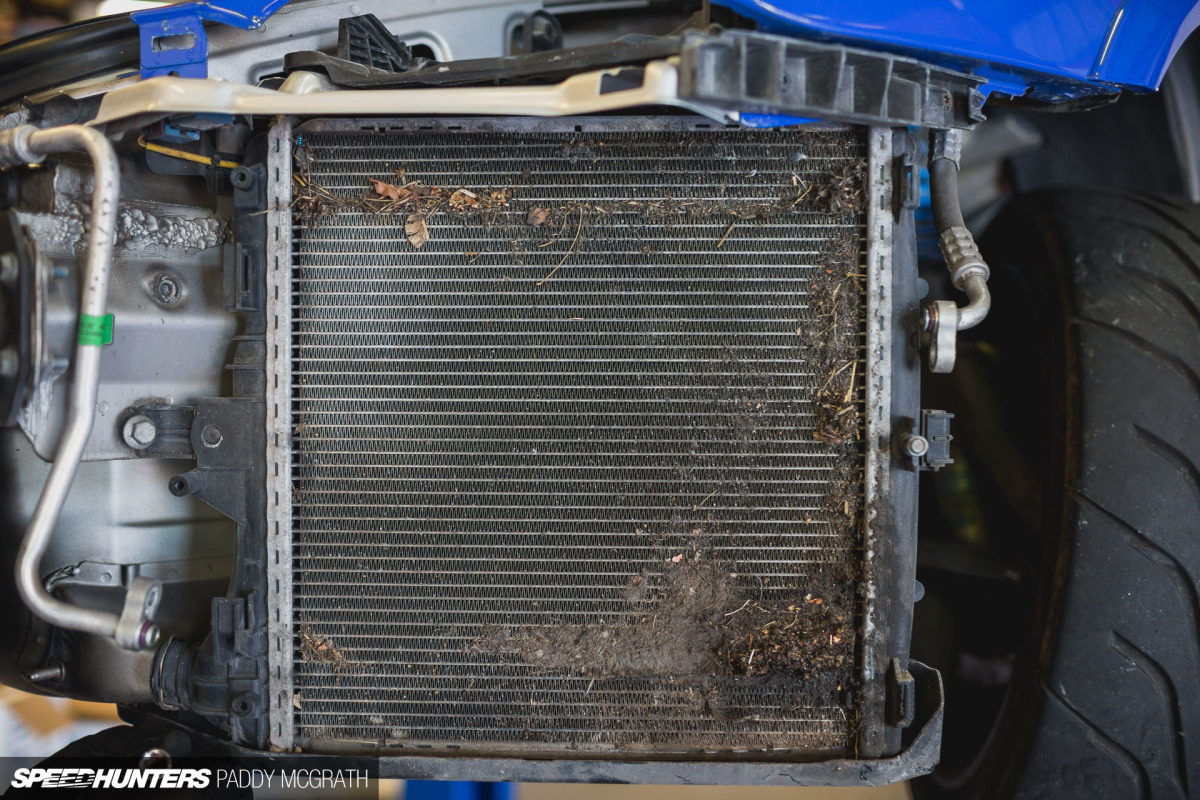
There are a couple of ways you can help your cooling system shed heat. One route is to upgrade the water pump, which will allow your cooling liquid to pass more frequently through your radiator. All good so long as your radiator can shed the heat.
A much better way to improve cooling is to look at the radiator itself. Generally speaking, a standard radiator will have pressed plastic end tanks and a mass-produced core. Over time this core gets clogged with bugs and dirt, and often the fins can become pushed in. On the inside, corrosion and residue from the coolant can block the radiator, or at least reduce flow.
None of these things really help the radiator to shed heat and with nine years of service under its belt, my Cayman fell foul of all these things.
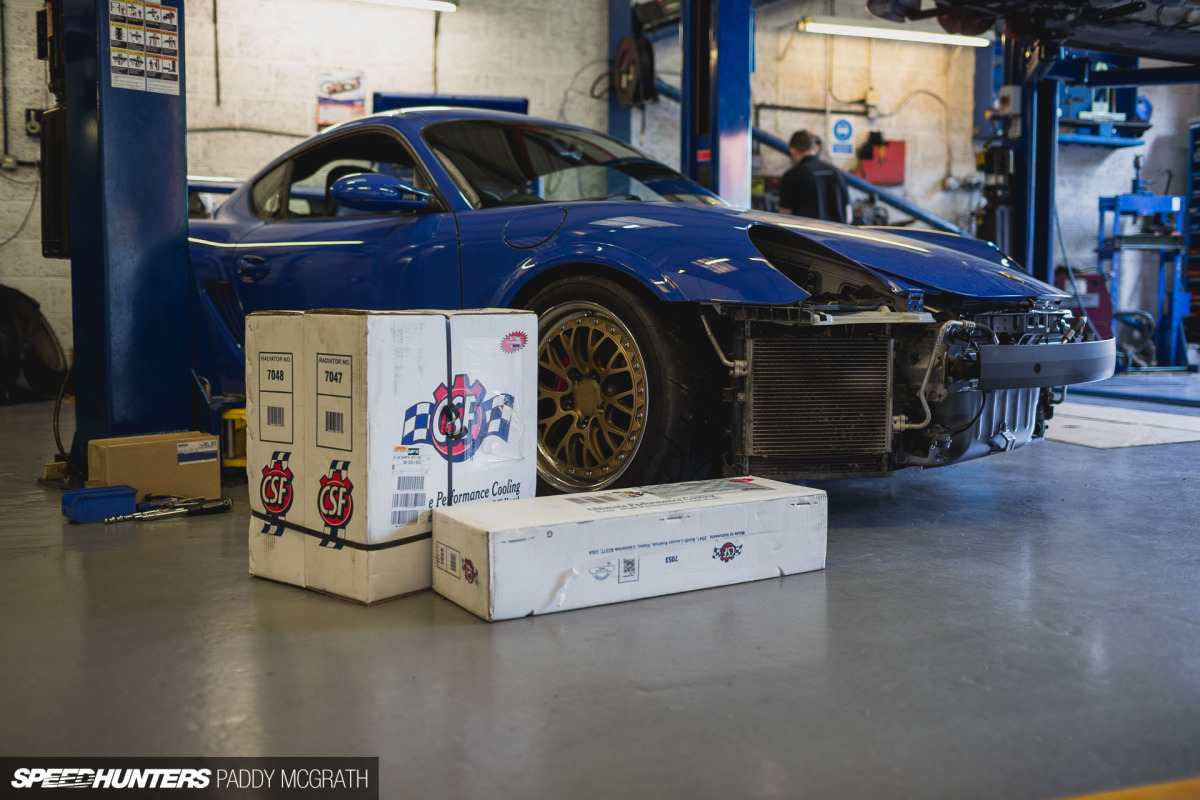
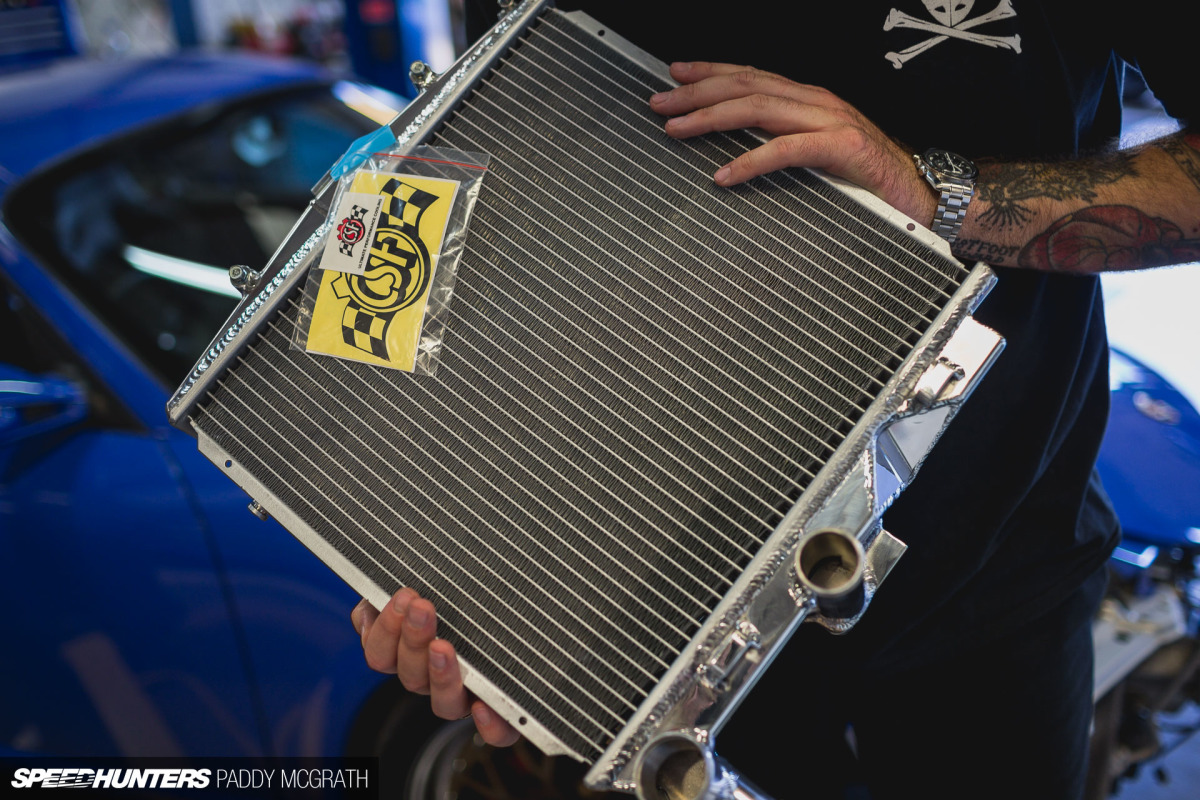
A great way to improve on a standard radiator is to fit a more efficient or larger radiator. Sometimes space can be tight, especially with modern cars like the 987 Cayman, so like me, you’ll be looking at radiators with a core that is better at exchanging heat. This allows you to use the same size core but get rid of more of that nasty heat with the same space taken. CSF radiators fit this bill exactly.
Welded end tanks help and allow for a higher system pressure to prevent the coolant boiling if things get hairy, and metal end tanks add extra heat dissipation over plastic ones too.

A highly efficient core is at the heart of the CSF product; something called a B-tube is uniquely incorporated to create an ultra thin, lightweight yet strong, tube for coolant to pass through. These thin-walled tubes enable greater heat transfer to the radiator fins that are multi-louvered to encourage heat rejection. At first glance you might miss it, but there’s a lot of tech packed into a small space here.
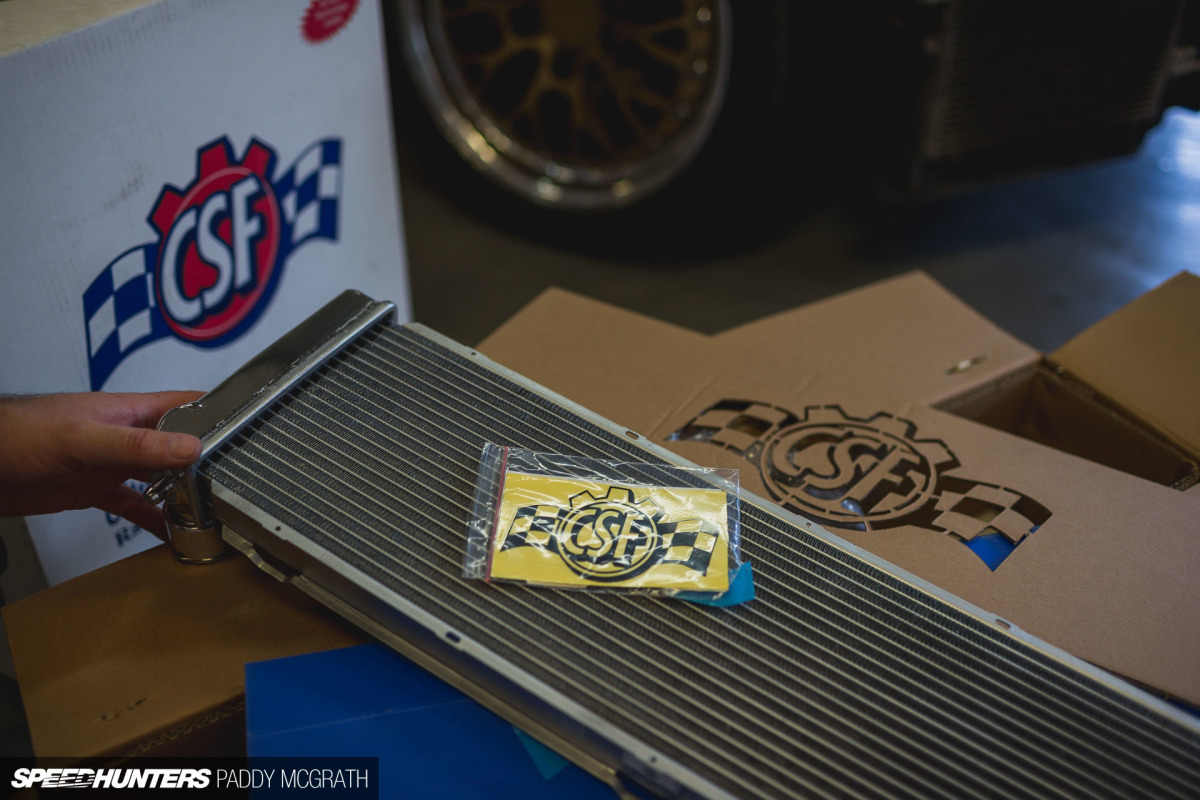
When researching which radiators to use in upgrading my Cayman cooling system I was initially drawn to CSF because of the CNC-machined mounting points and pinpoint OEM direct fit. The core technology sealed the deal. Because CSF produces a radiator upgrade for both the 987 Cayman and the 997 GT3, it meant I could use all OE parts to convert the front of my car to use a proper GT3 centre radiator cowling. After all, asking the car to do a GT3’s job with better-than-GT3 parts seemed like a fair deal.
Car Guy Joy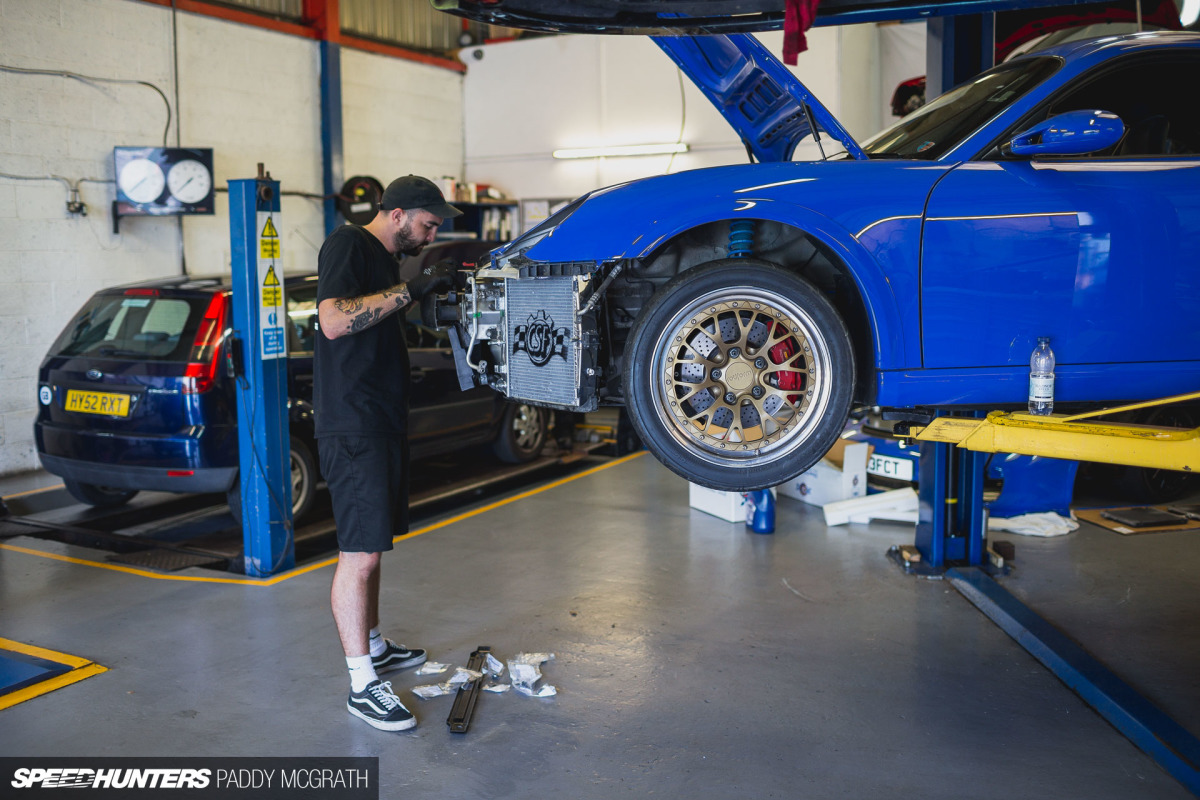
It was around this time that Paddy mentioned to me that he would be in my hometown of Southampton. This doesn’t happen every day, and it turned out he would be having a rather tasty differential fitted at Regal Autosport. Not one to miss out on a car-party, I booked the Cayman in with Regal for a few days too.
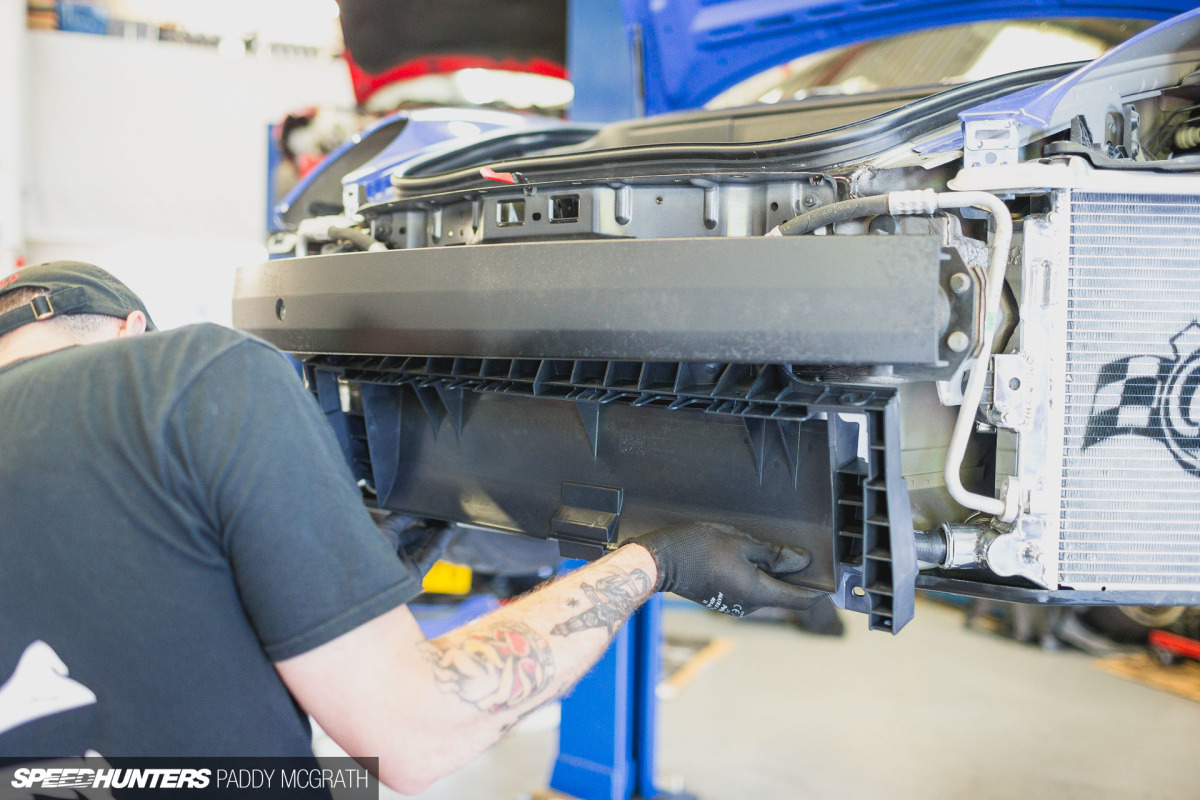
Cue four hours trawling online Porsche parts lists and a few too many Google image searches, but eventually I managed to get every piece of the GT3 centre cowling ordered. This was super important to me; most people use a 997 Carrera centre radiator that vents below the car, but seeing that I have spent considerable effort in reducing aerodynamic lift I knew that my car had to vent the centre radiator out the top of the bumper just like a real GT3.
They say that you only get out what you put in, but there’s two days there I’m not going to get back… Thankfully the CSF order was much simpler.
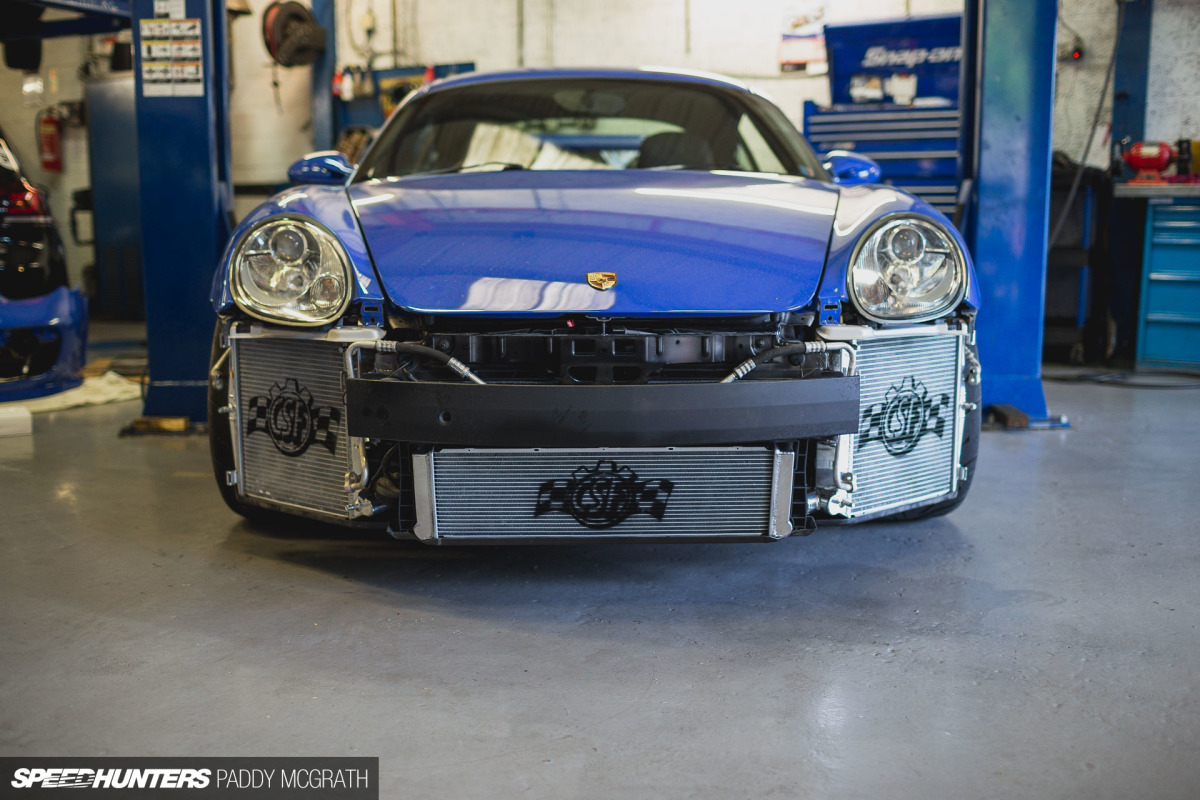
The Cayman cooling system now has two stock size, higher efficiency radiators in each wheel arch, plus a high efficiency third radiator in the nose. Just like a 997 GT3. The middle radiator acts as a central heat sink while the outer coolers allow coolant in and out of the side radiators. All original GT3 cowlings house the third, centre CSF radiator and allow it to vent through the top GT3 smile vent.
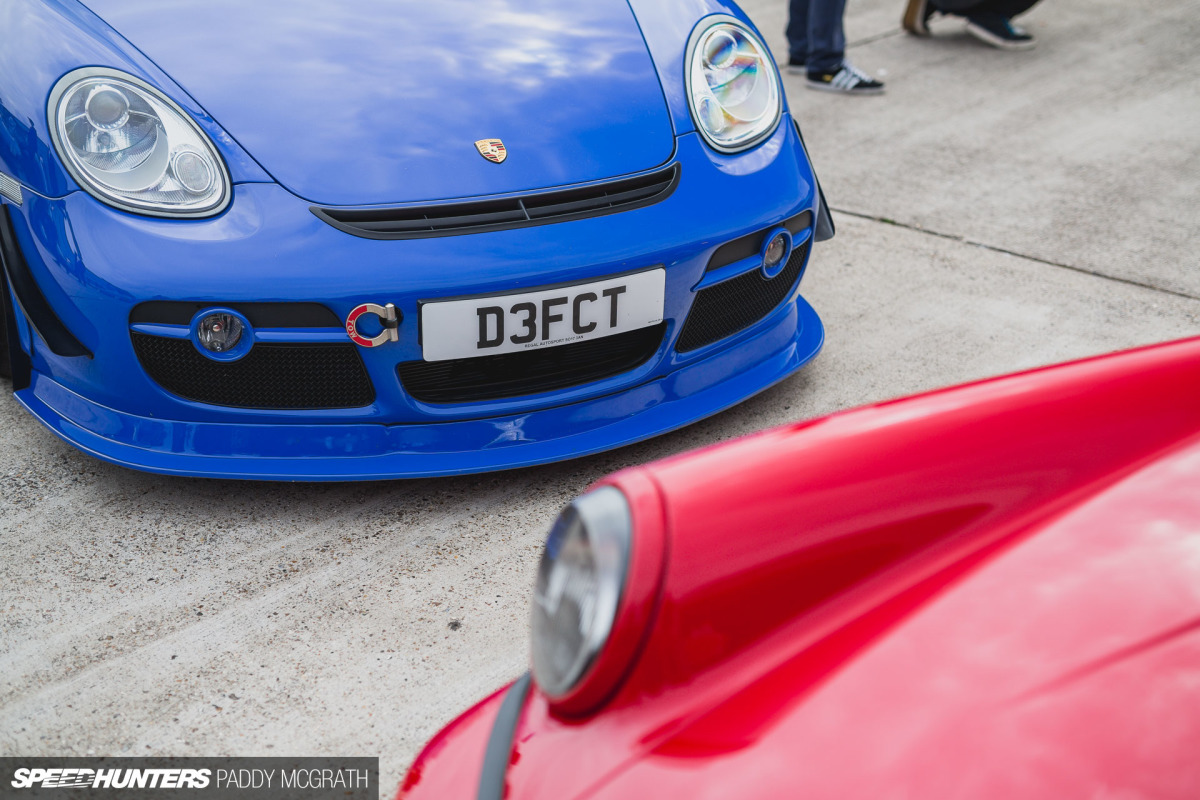
It’s a pleasure to excitedly tell people the GT3 vent is fully functional and will help reduce lift, although it’s usually met with a blank expression from non-car people. Porsche calls this ‘zero lift’ and it’s said to be one of the reasons why the 997 GT3 is so stable at high speed. With such a large wing on the rear it’s welcome comfort, although I’m yet to try this principal out on circuit for real.
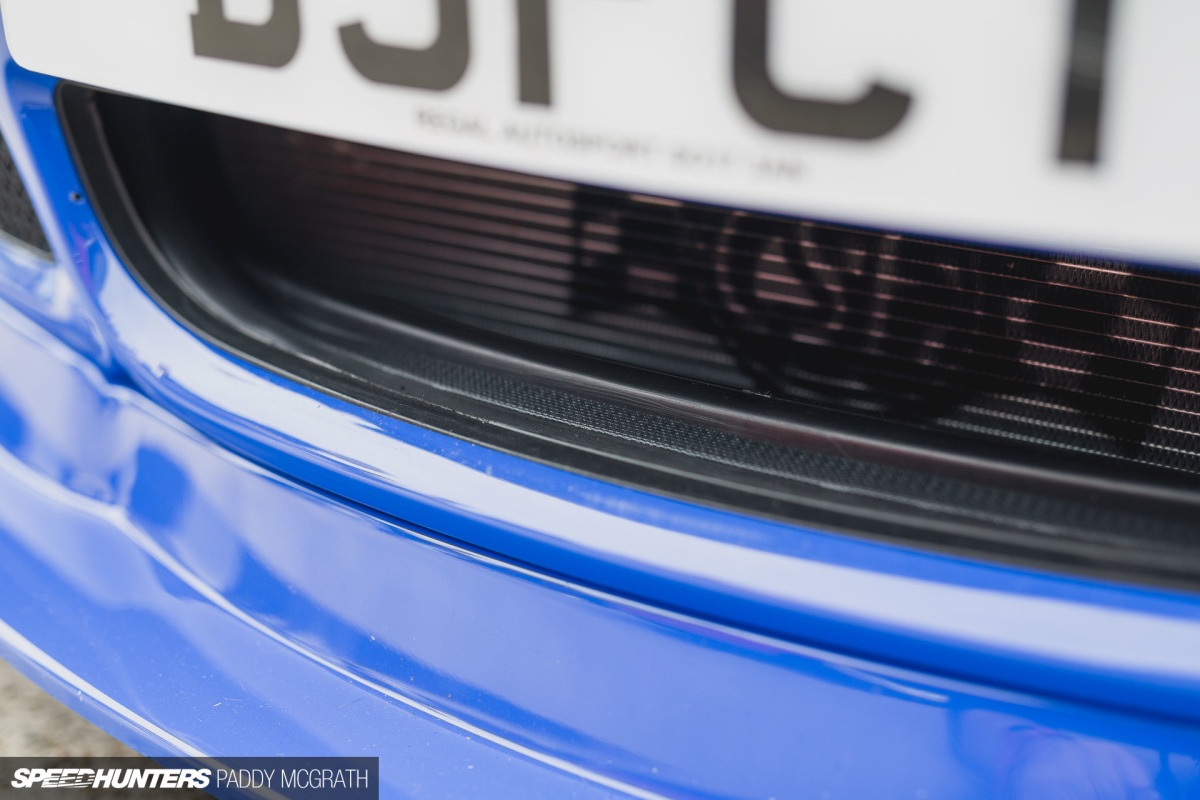
It seems a shame to hide such a pretty cooling package behind a front bumper though. It’s one of those things that when I’m driving I’ve come to think of; I can’t see it, I can’t hear it, I can’t even feel it, but I know they are there. There’s a lot of technology keeping this Cayman cool and it should really pay dividends next track day season. Getting rid of that niggling voice in the back of my head telling to take it easy is perhaps one of the best things I’ve done to this car.
Plus, every so often I catch a glimpse of the centre radiator through the front grill and smile at what lies behind.
Ryan Stewart
Instagram: 7.nth
ryan@speedhunters.com
Photos by Paddy McGrath
Instagram: pmcgphotos
Twitter: pmcgphotos
paddy@speedhunters.com
More Porsche related stories on Speedhunters
CSF Radiators
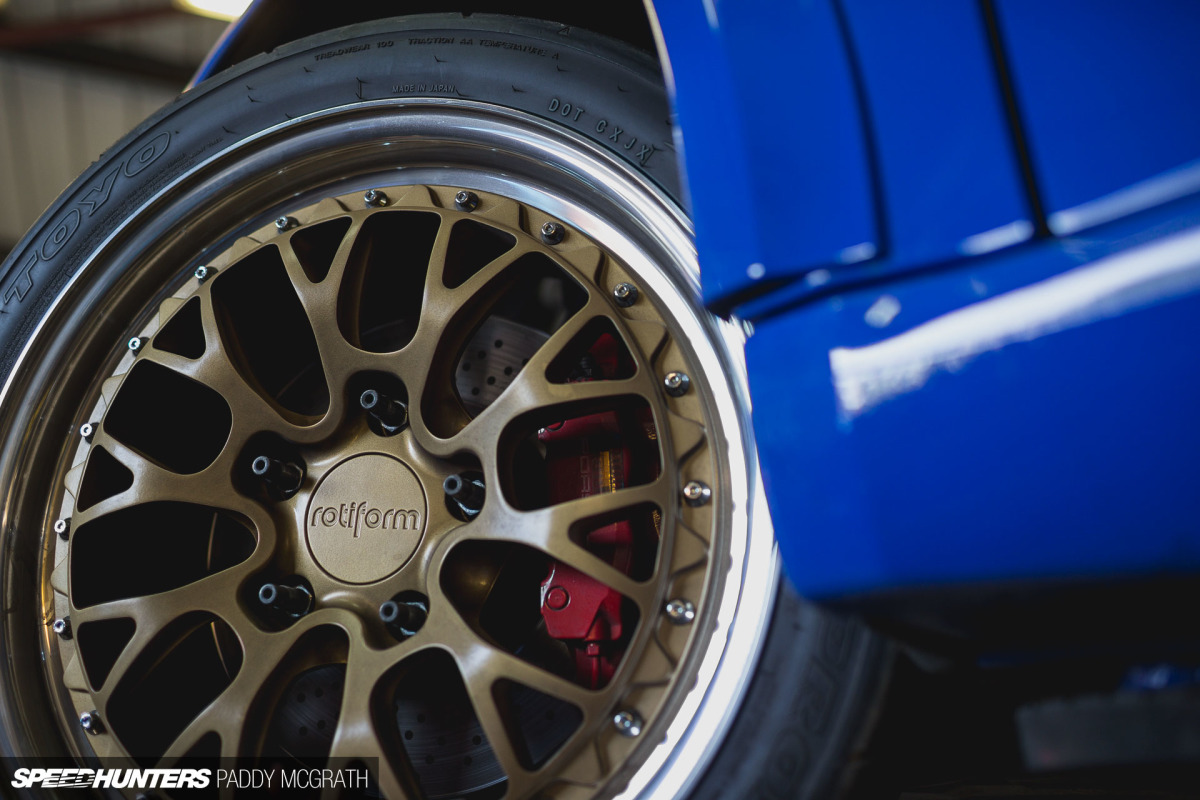
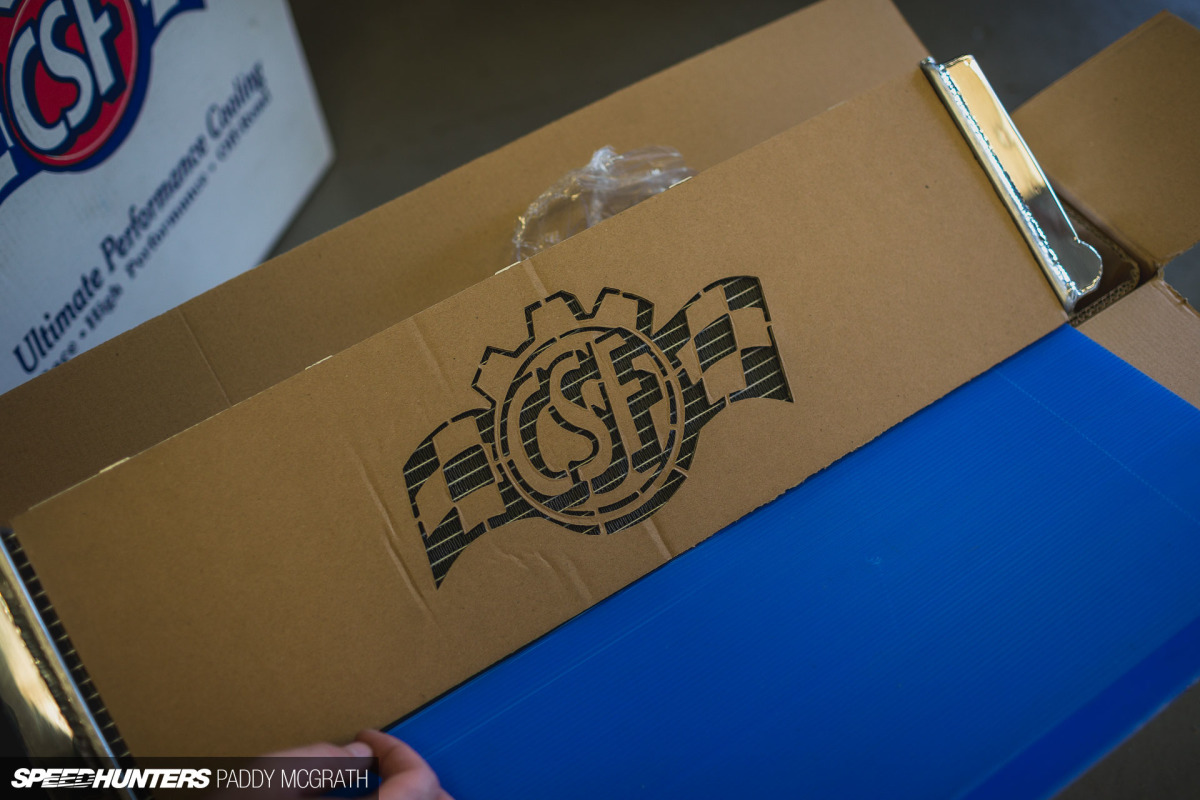
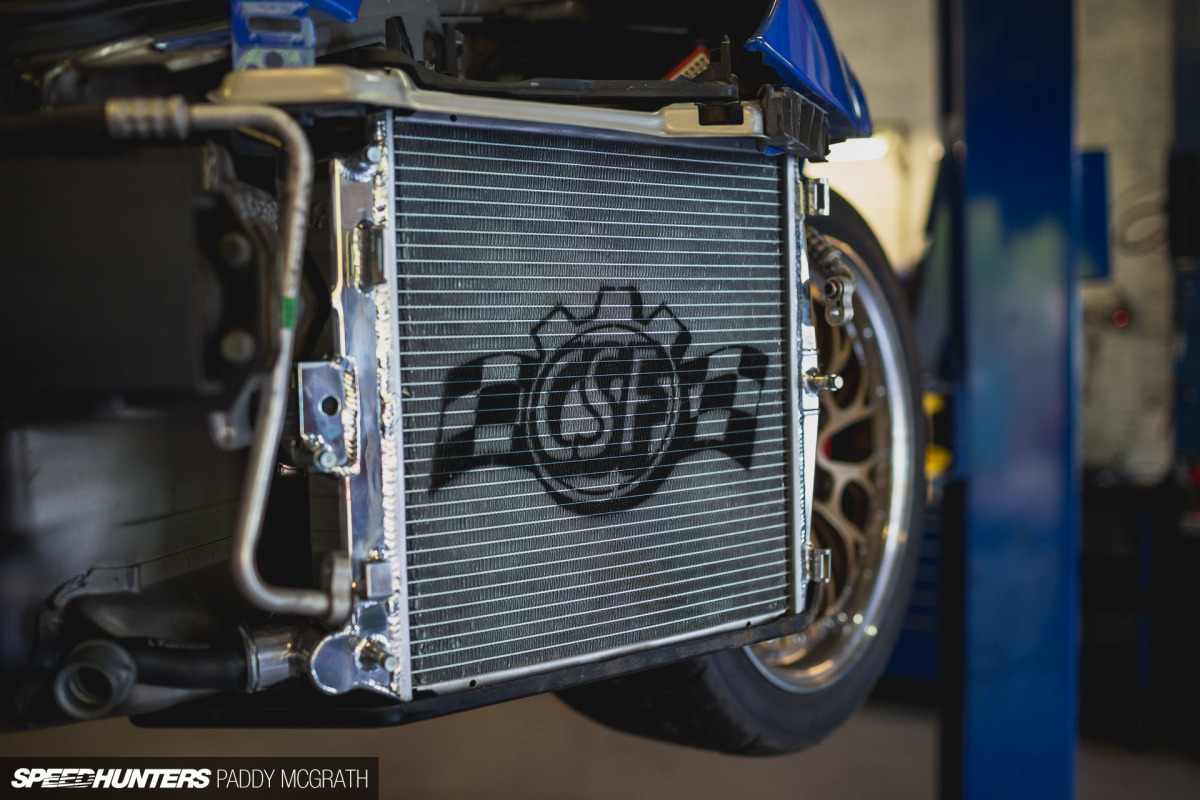
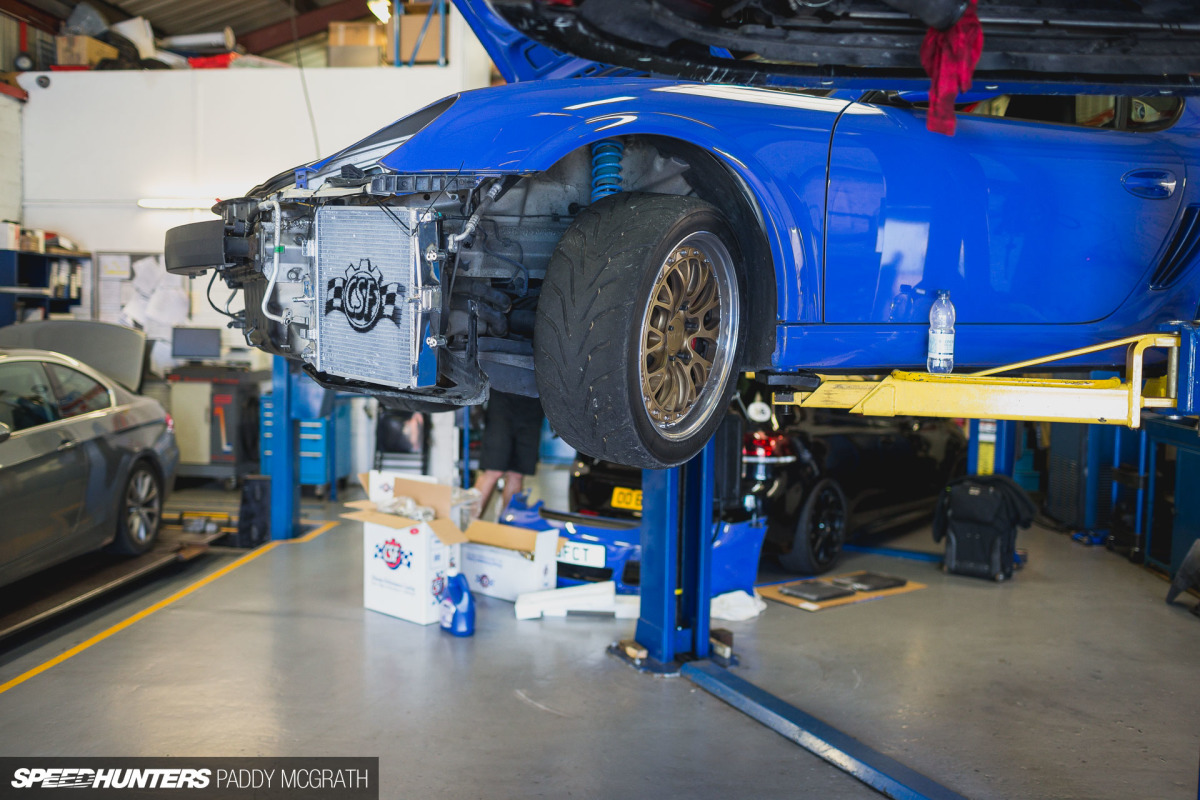
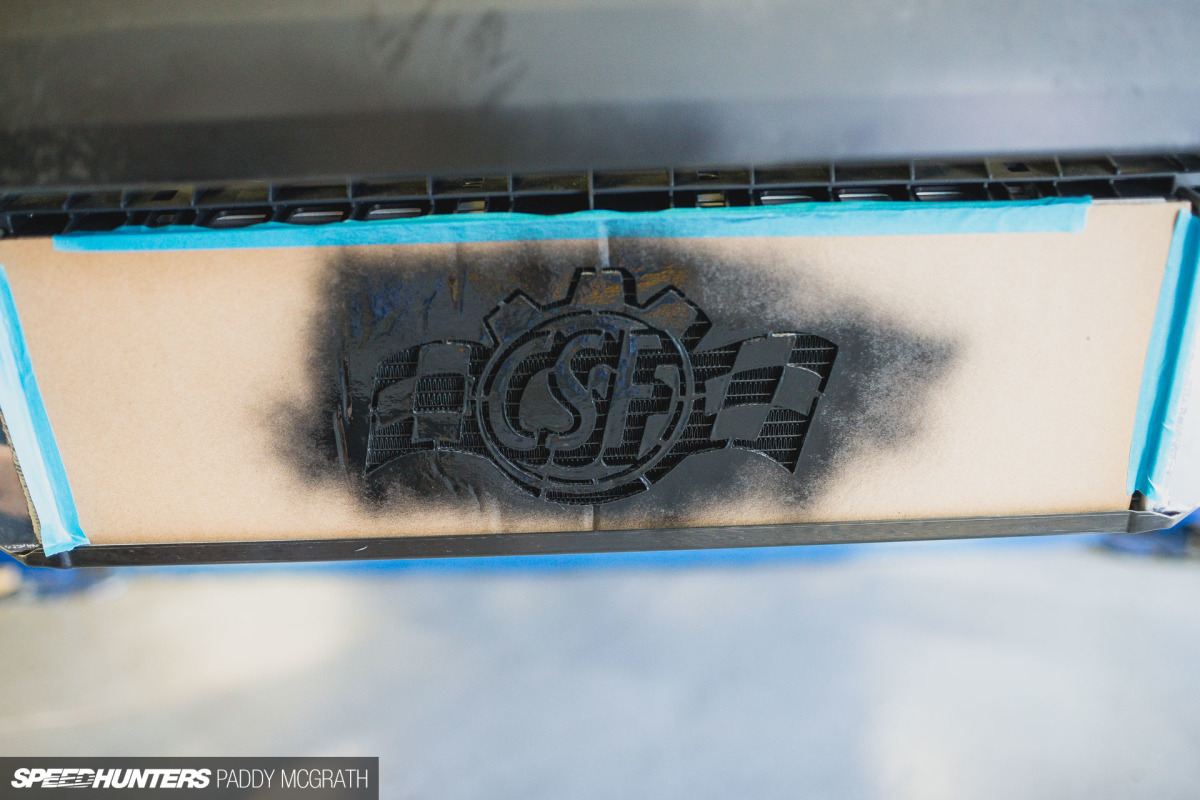
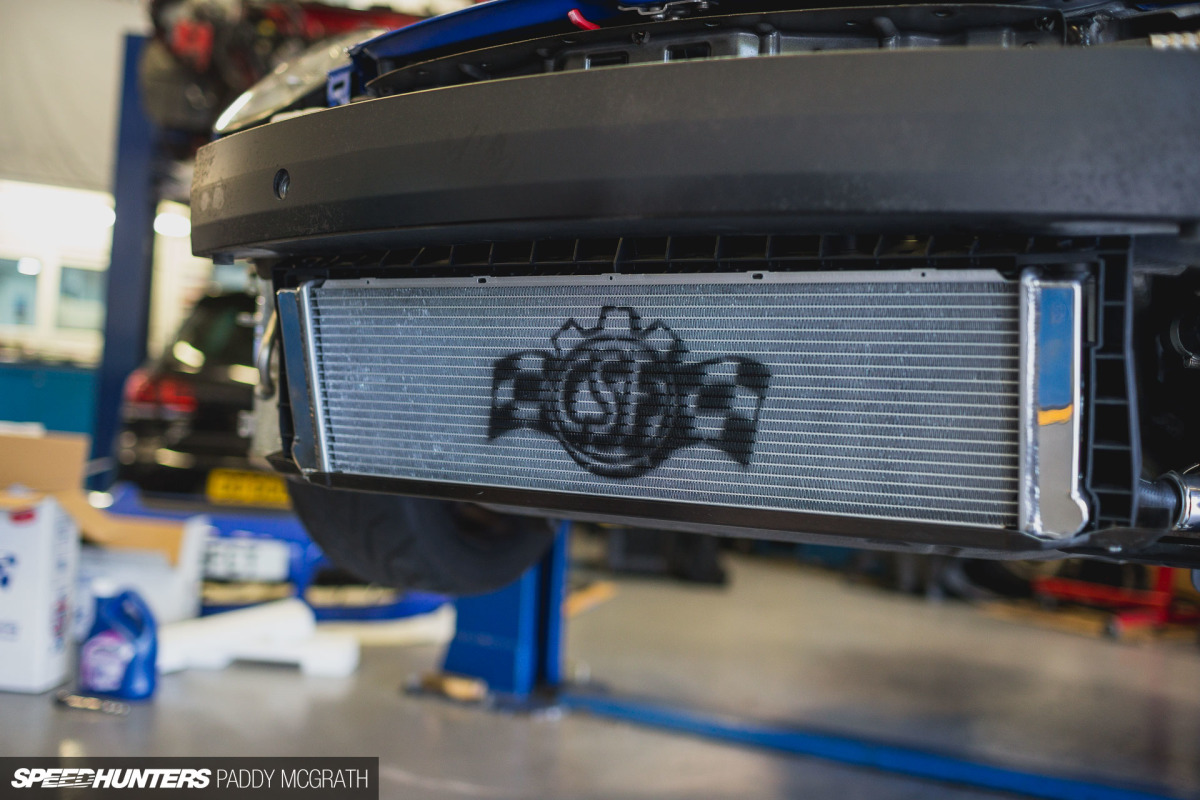

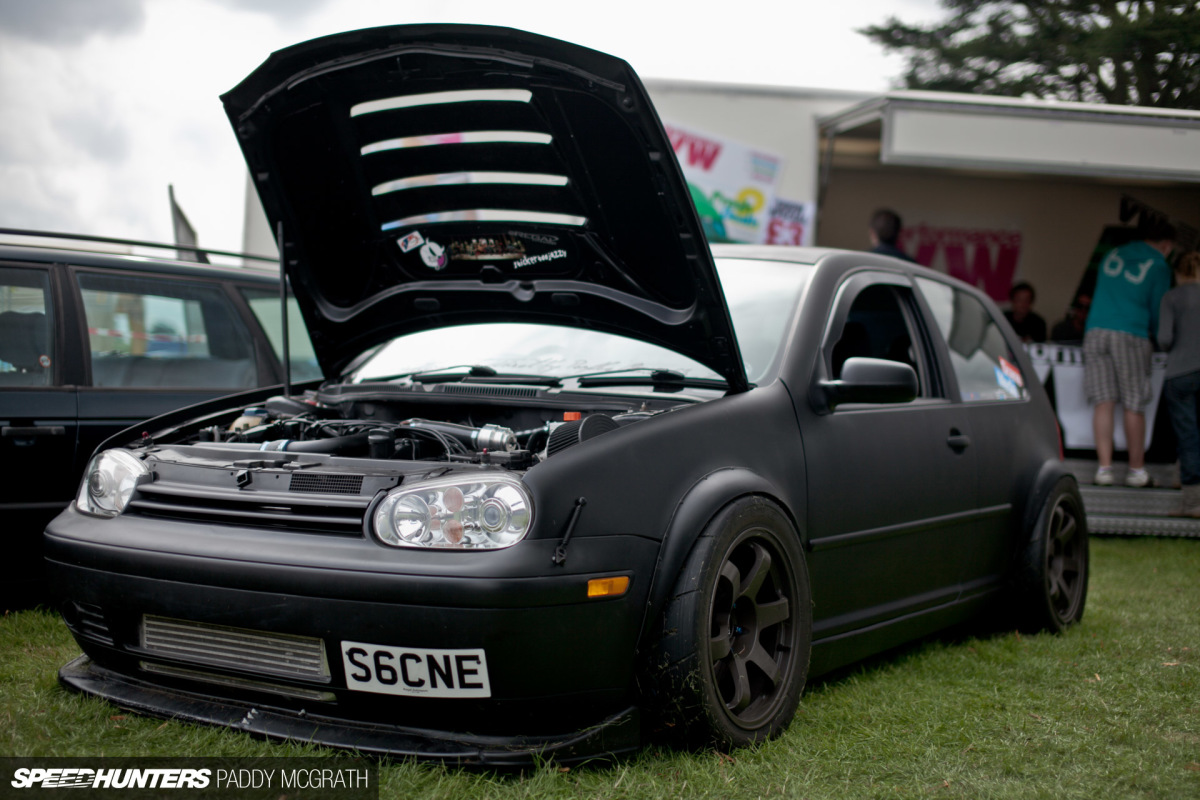
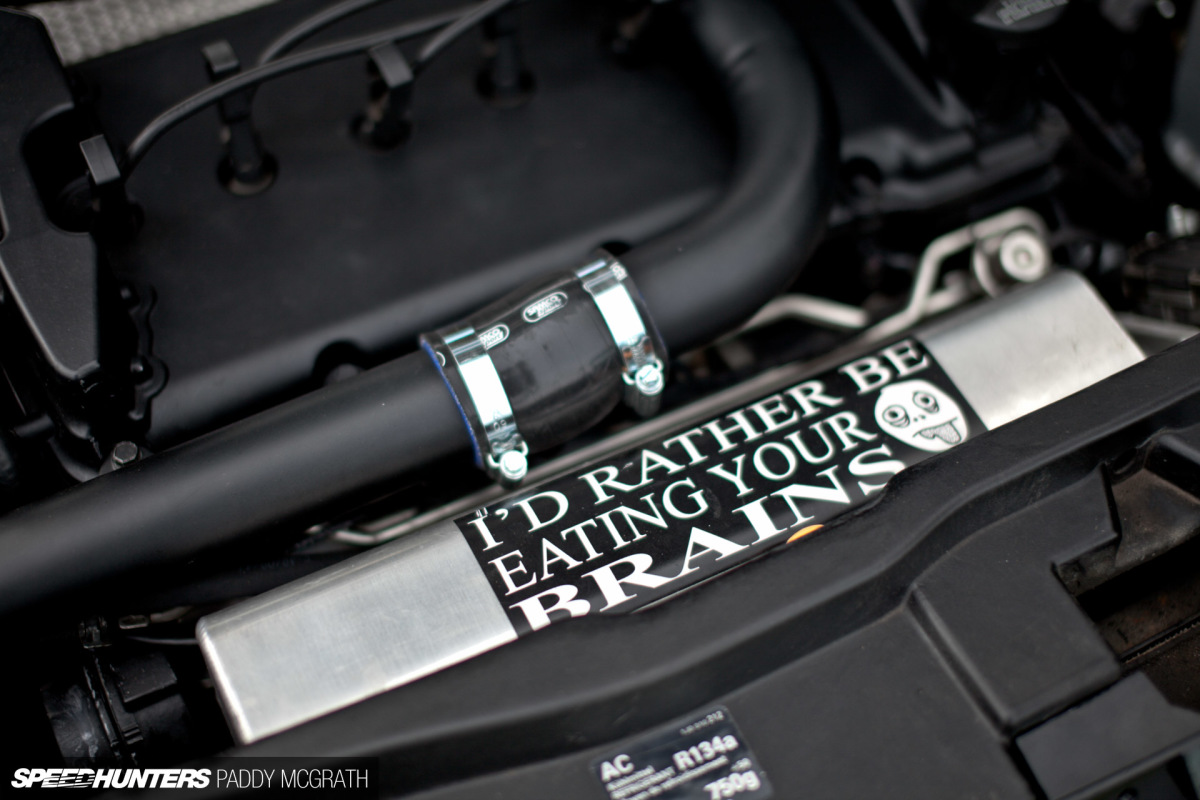

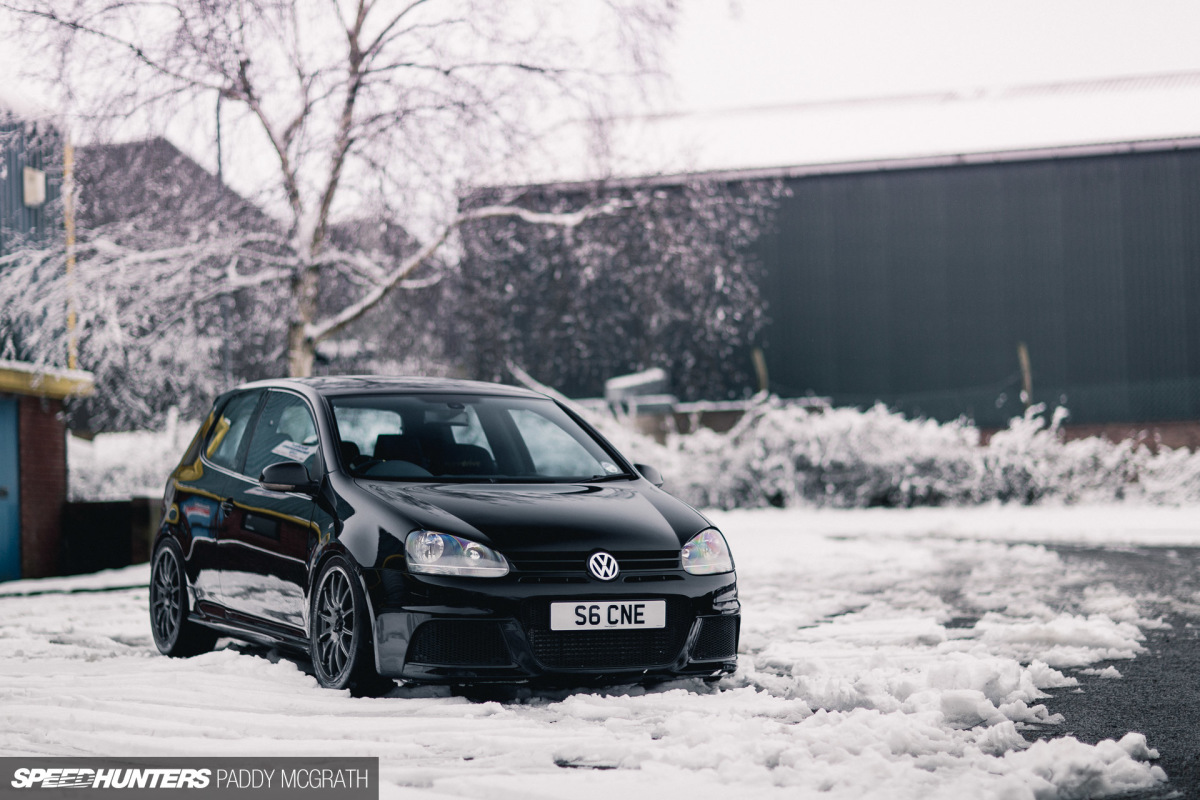
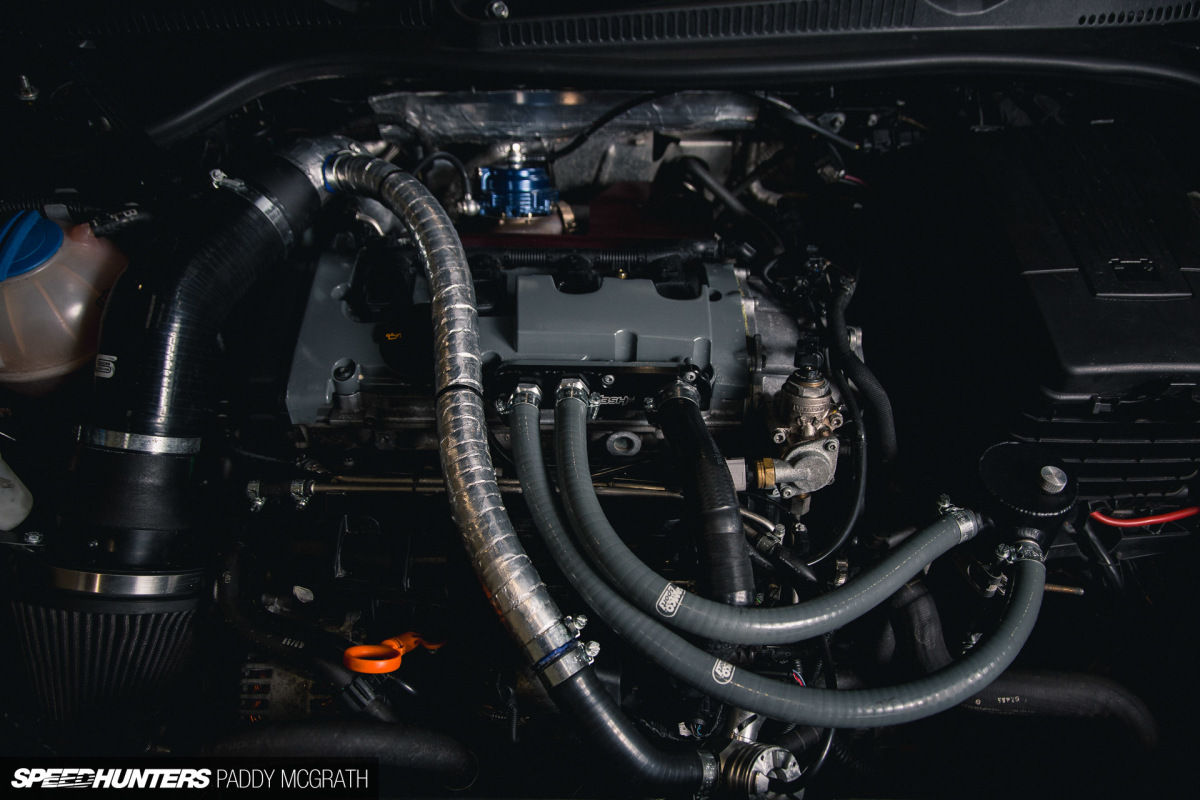
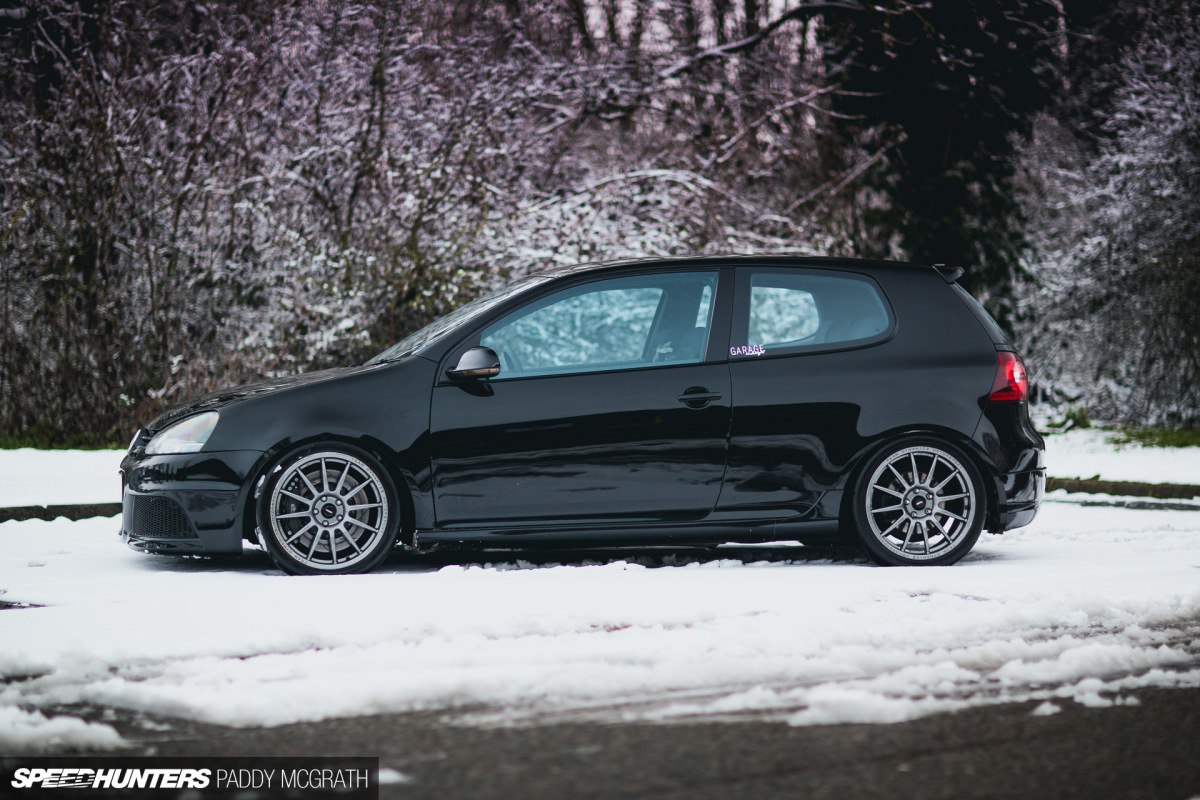
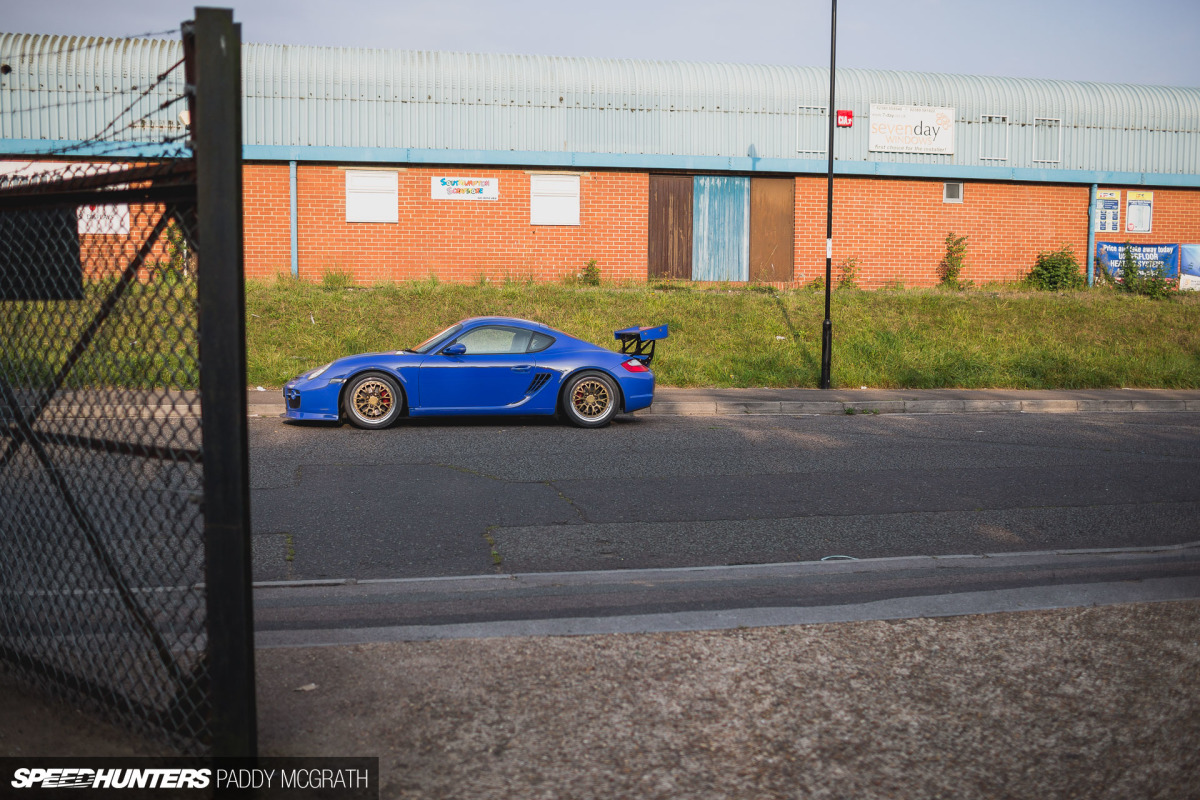
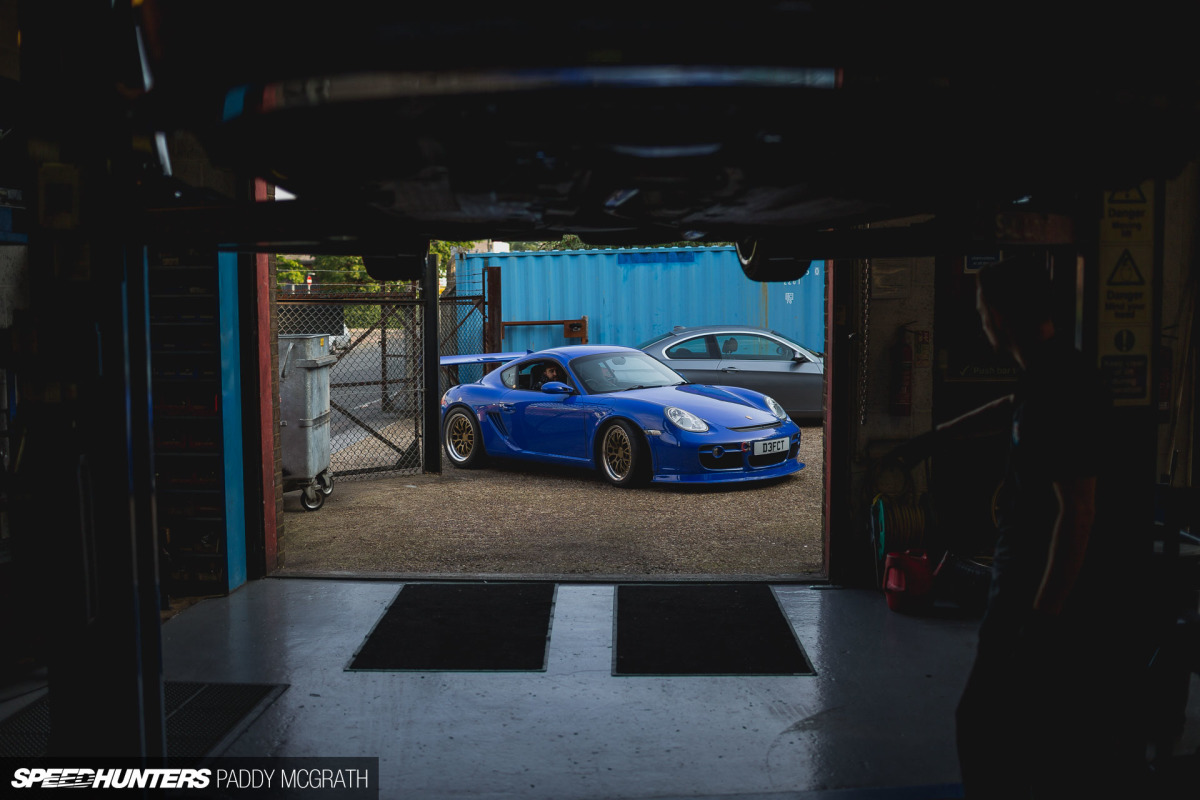
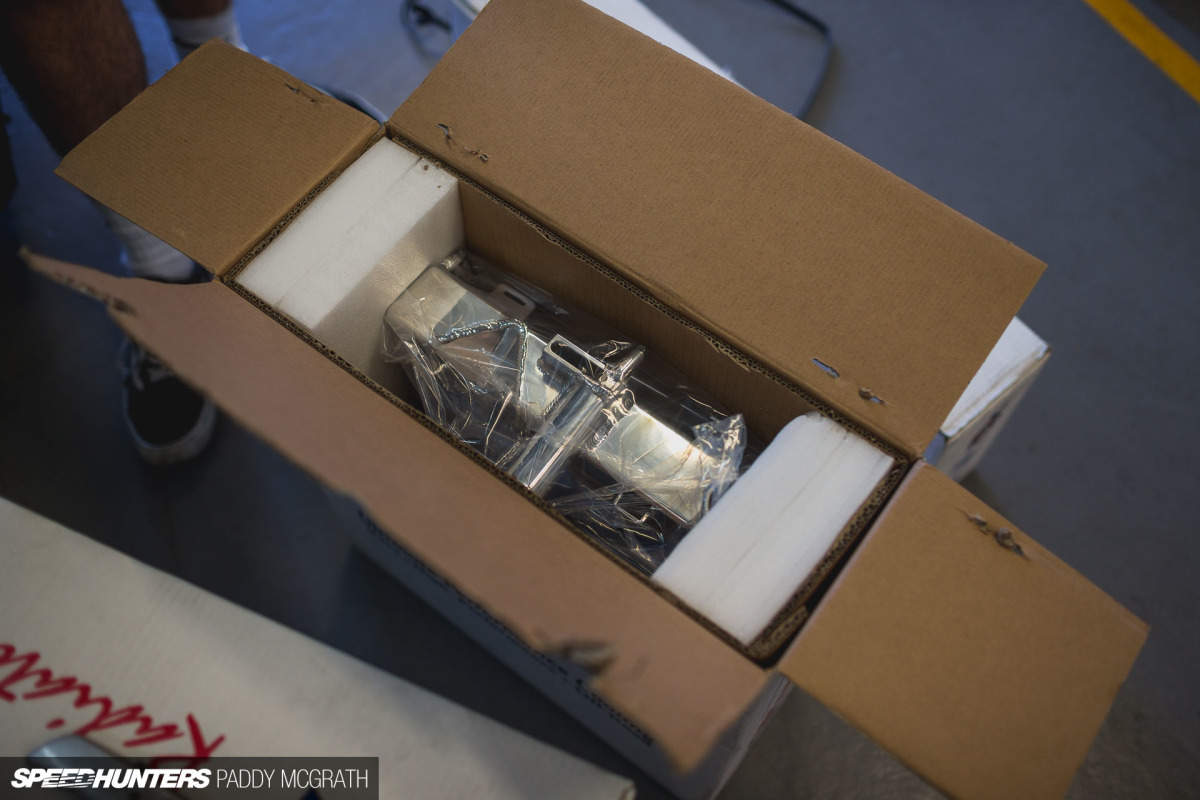
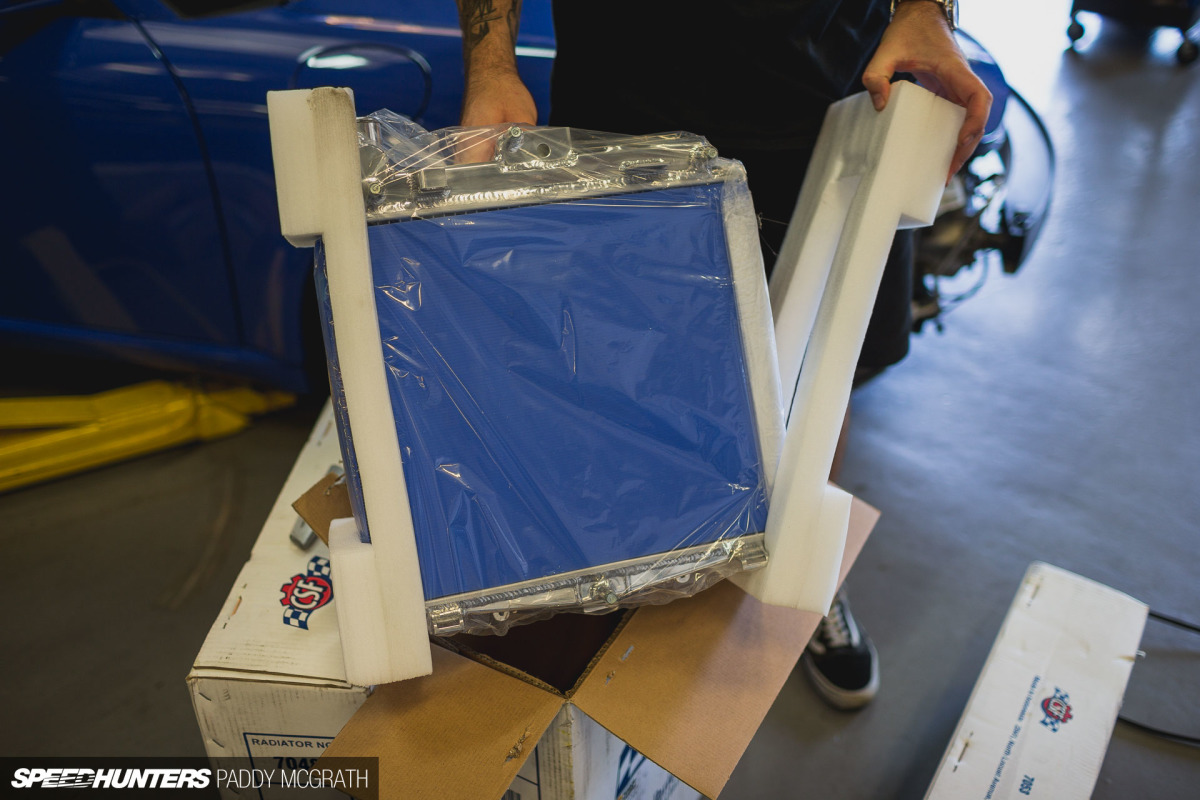
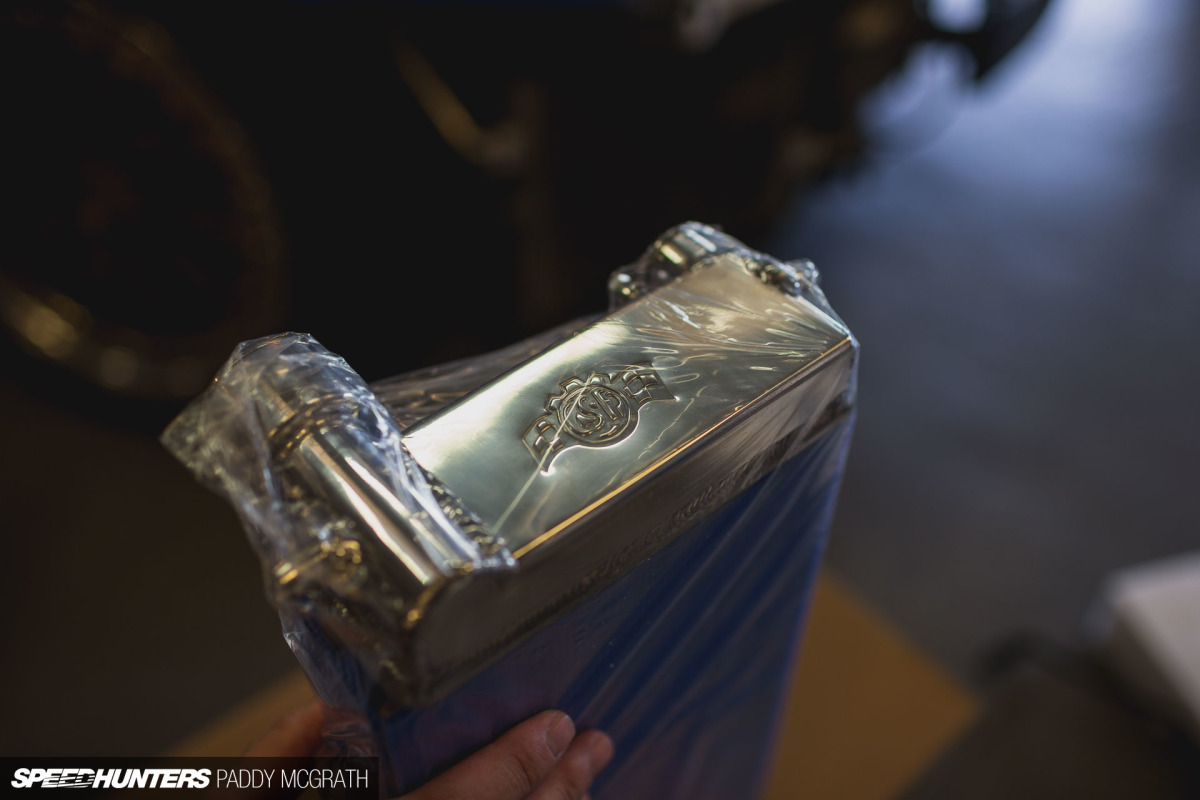
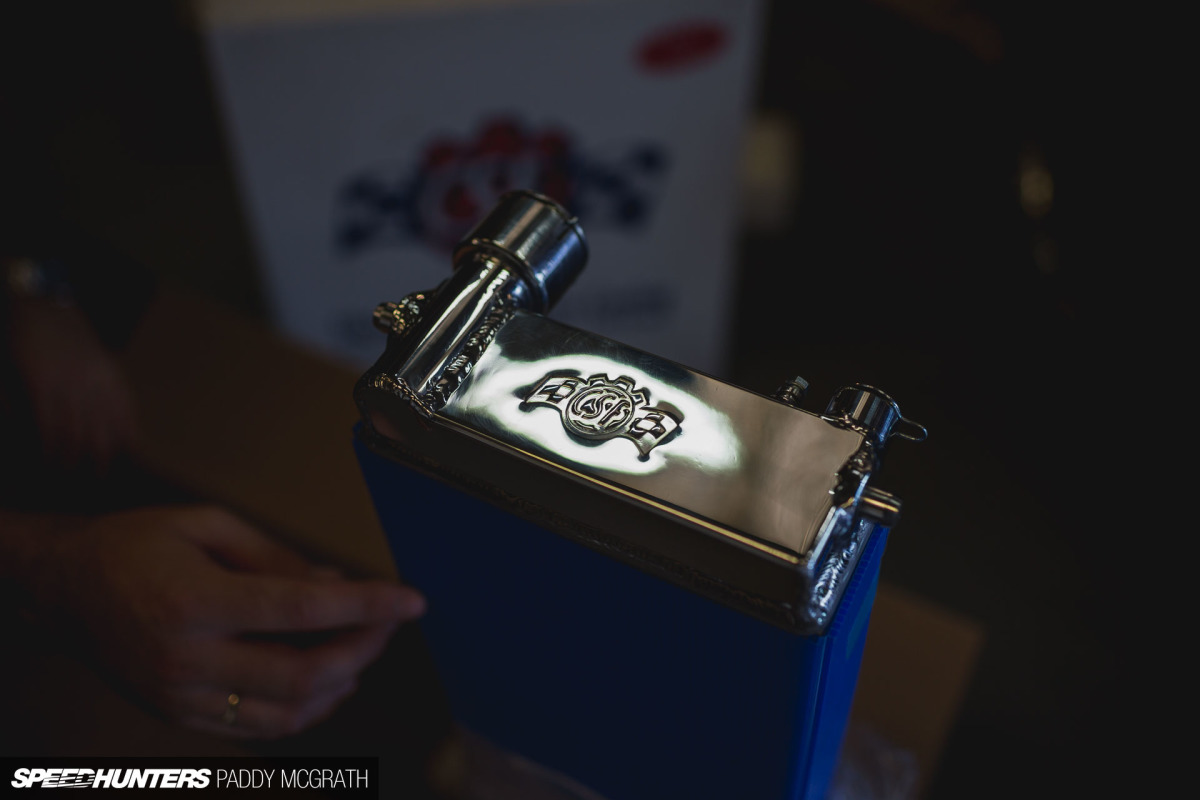
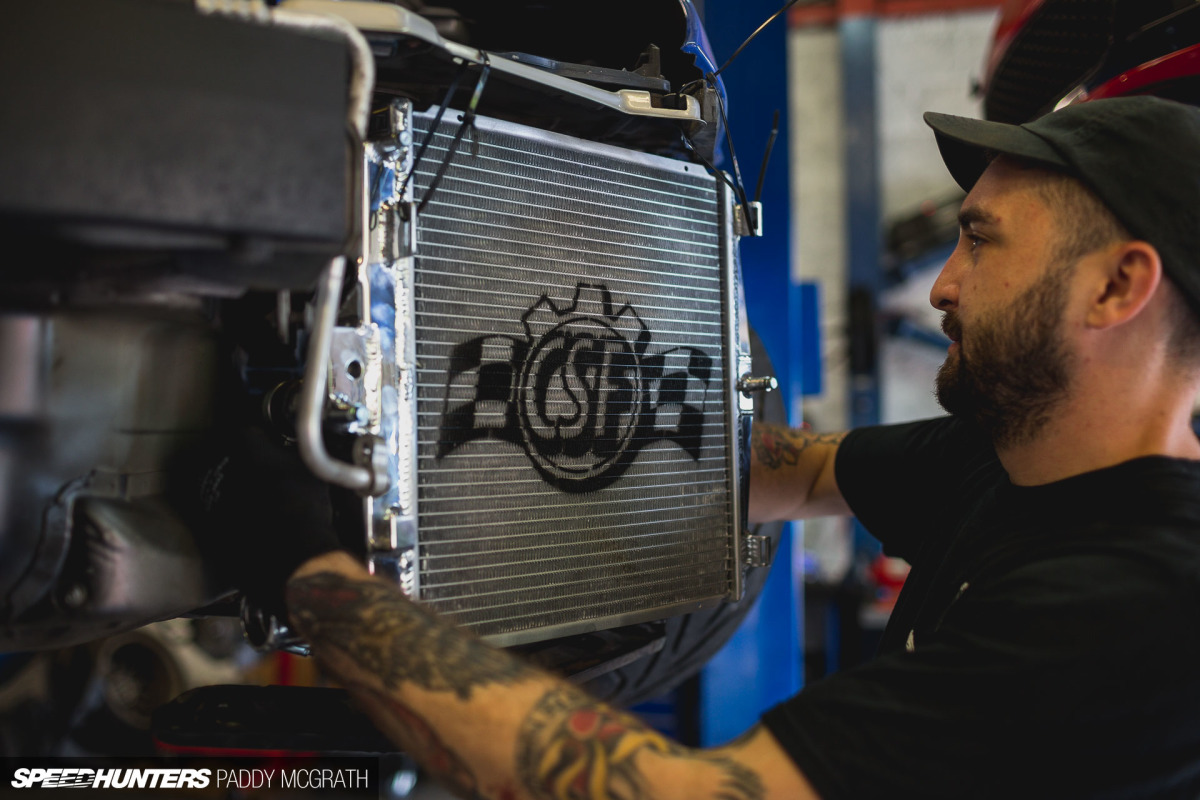
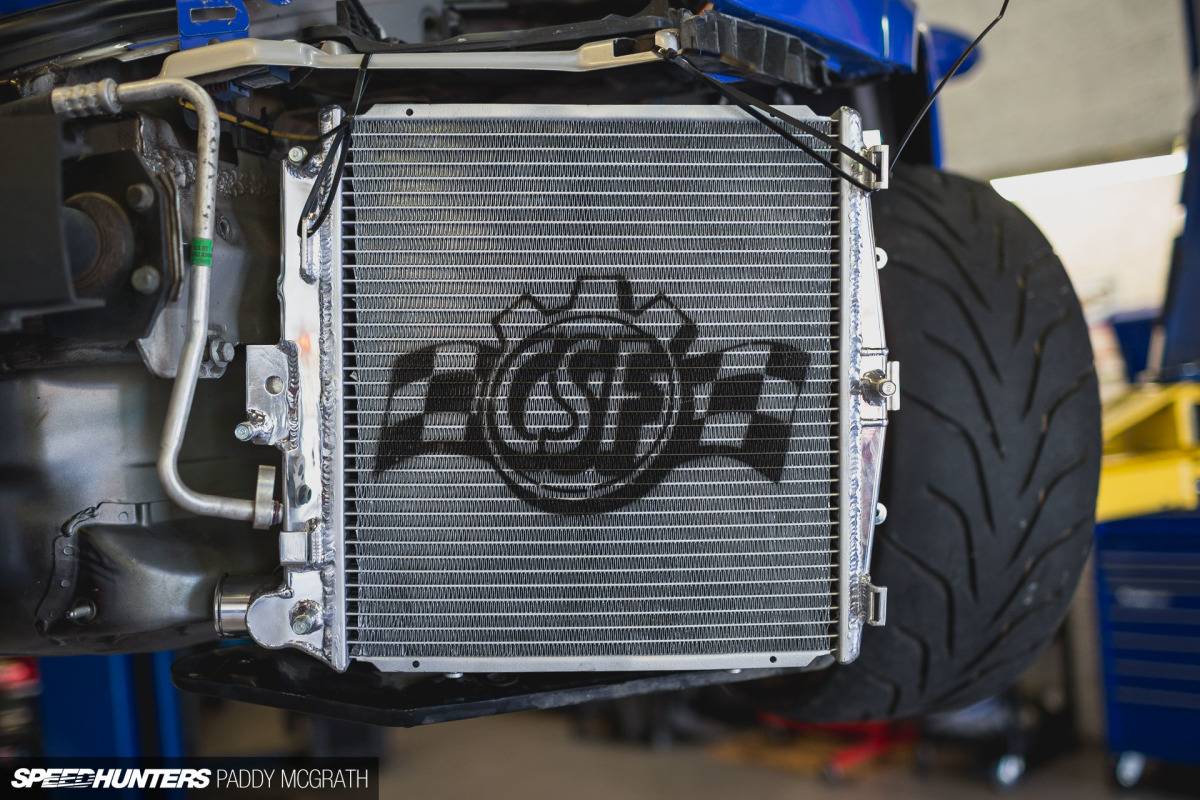
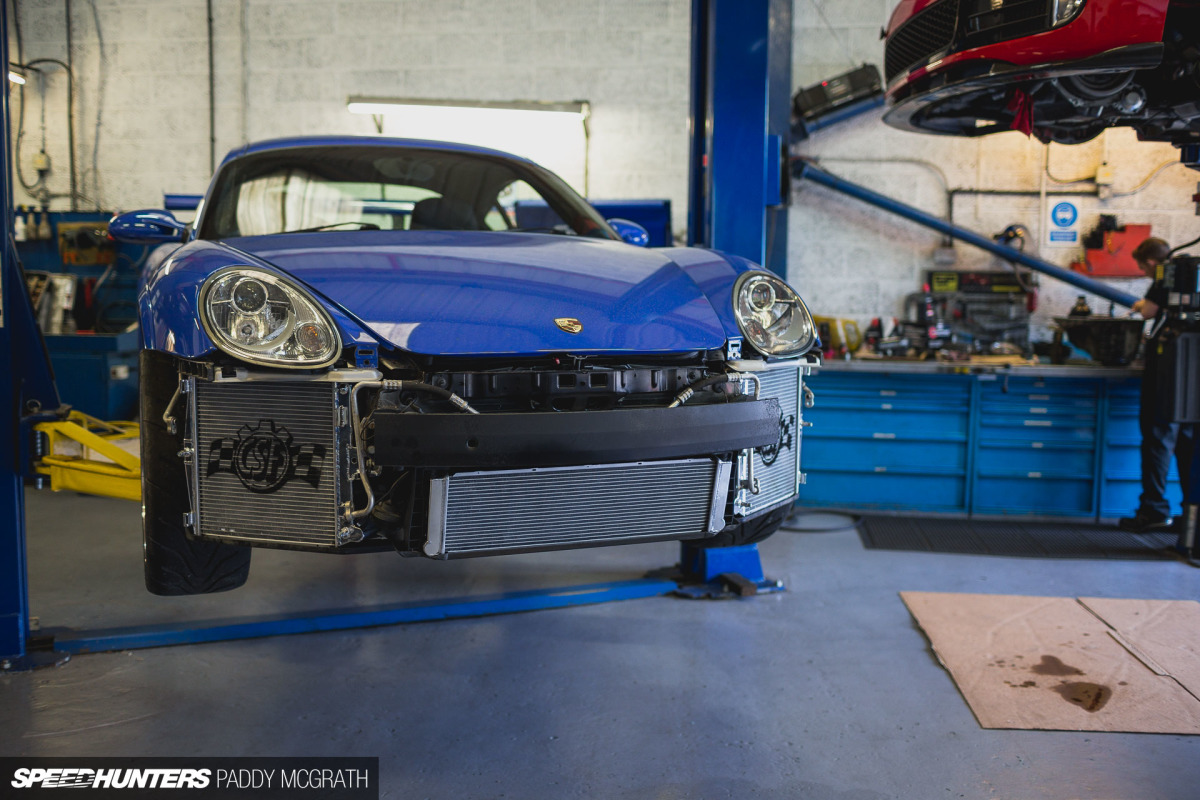
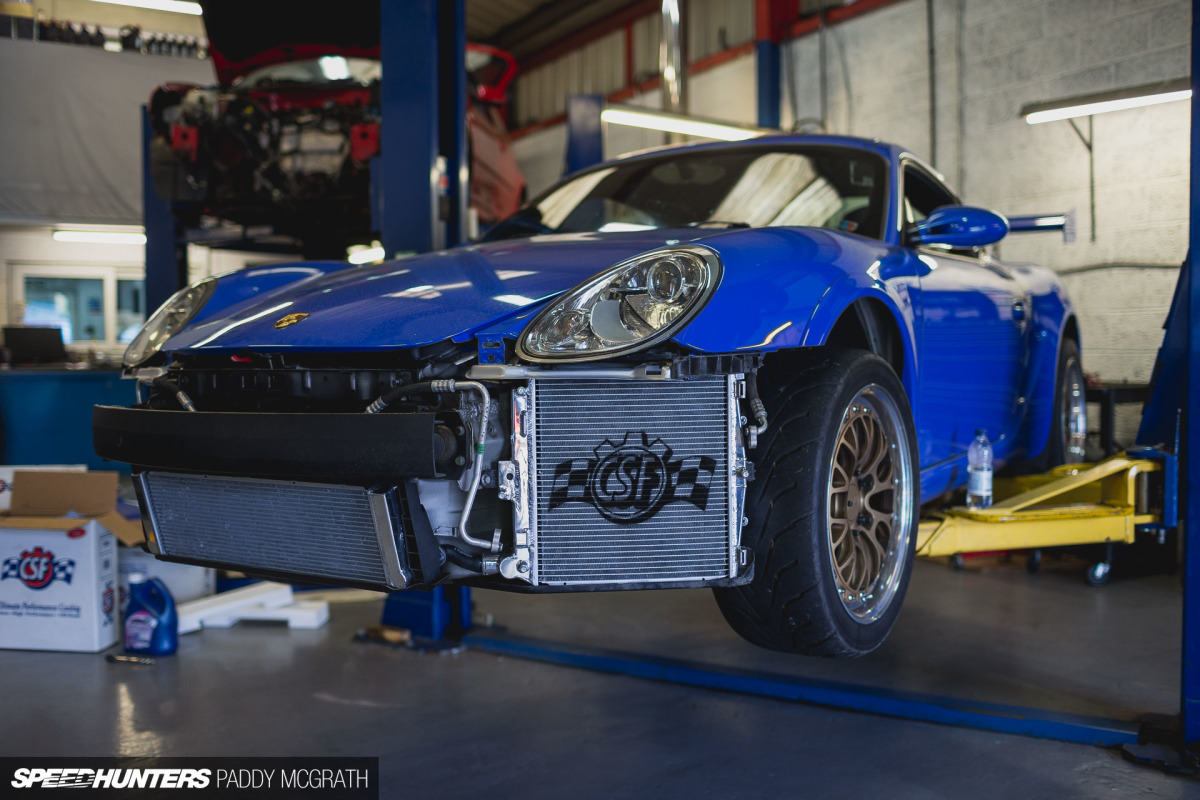





Amazing radiators but they have to change and simplify that logo design.
Is your plate supposed to read as 'Essex scene' or just 'scene'? I've always wondered...
Brian E Spilner wait...how are you even.... is this a conspiracy? Didn't you die in a Porsche related accident?
good job man, I hope no-one nudges the front in a carpark with all those radiators behind there!
Brian E SpilnerOne of the Scene Media boys.
Brian E Spilner
RoughIdea I actually really like the logo design, it's got a great deal of heritage behind it and harks back to the logos from before. Pretty cool when you see how it ties in!
You sir, deserve a standing ovation for the beautiful science lesson. As far as I know (very little, if anything), half the heat is exhaust heat and the other half is sent to the cooling system.
What happens to the remaining 1/3rd of the chemical energy? Is that, in fact the exhaust heat or are you talking about drive-train losses?
Mayank0809 we are talking about all those other losses - you also have frictional losses and also sound too, my point is, the internal combustion engine on the whole isn't very efficient and when we are hungry for more power and chasing numbers, adequate cooling often gets forgotten.
Love the look of this car, I've just bought a 987 Gen 2 S with some track days in mind is there anywhere else I can see your build on this car on the net ?
crafty72 I'll try talk Ryan into a full feature when it's finished.
Paddy McGrath crafty72 When is anything ever finished Paddy?
I must be missing something but the end tanks on those side radiators are a joke for even distribution of coolant ..
Hosing out the cores should be done every time the car is washed..oh well
Also if you remove the fog light and the area above it you will have another 1/3 more direct frontal airflow...
Duhh
roninlotus211 The OEM tank design isn't the most ideal - I'll agree with you there. However, in order to make a "drop-in fit" upgraded radiator + fit with the OEM shroud and bumper, you really have no choice but to follow the OEM design as much as possible. We do however make the radiator core ~33% larger in capacity from a 31mm to a 42mm core. This also increases the volume of the tank. Also remember water flow is slightly different then air as it will follow the path of least resistance. Water coming into the tank will drop down all the way to the bottom of the end tanks before being pushed through the full length of the core.
Also - washing out the cores after every wash - quite hard, especially since there is a condenser mounted in front of them in most road cars that still retain A/C
CSFrace roninlotus211 Still you would be better off by sacrificing a 1/2" of core width and increasing the end tanks capacity. Both air and water flow the same the only difference is one is compressible. The radiator is always full, nothing drops down it flows due to pressure and restriction...
That is just a bad design and you still have 1/3 of the high pressure cooling air flow blocked off..
roninlotus211 this isn't really required as Porsche gave us some really great ducting behind there. The whole opening is ducted toward the whole of the core, so really by removing the fog light and upper section of the bumper you decrese the effectiveness of this ducting by reducing the pressure difference at the mouth.
roninlotus211 it's really not possible to wash out these cores when washing the car, unless you remove the bumper and AC cores each time... which I'm not sure anyone is willing to do.
7thseal roninlotus211 I'm sure it decreases the pressure as the ducting opens to the core, increasing the pressure would be funneling down, more air into a smaller space..."ram effect"
Mercedes took the right approach by opening up it's star and adding mesh to allow more airflow to it's core... I'll leave my 991 Turbo S rads stock..
roninlotus211 7thseal the opening size at the nose of the duct, the front, should be smaller than at the back. This is called an expanding duct and uses the velocity of the vehicle to maintain positive pressure in the duct and a good air speed for an efficient duct. From memory it's quite subtle - no more than 6-7 degrees.
This is why you don't see LMP cars with huge holes for brake ducts in the front of the cars, it's about using physics to your advantage rather than just sheer volume and brute force. I know that Porsche designed the ducting to work efficiently to feed these radiators, i also know that changing the duct design to a larger opening reduces the expanding duct effect.
7thseal roninlotus211 Carbon brakes need less cooling. LMP cars are traveling at extremely high rates of speed so their cooling system is far different than a street car.. Expanding duct does not increase air pressure flow in fact reduces it. NACA type ducts increase pressure...
Putting a oversized radiator behind a small opening wouldn't be needed if the opening were larger...